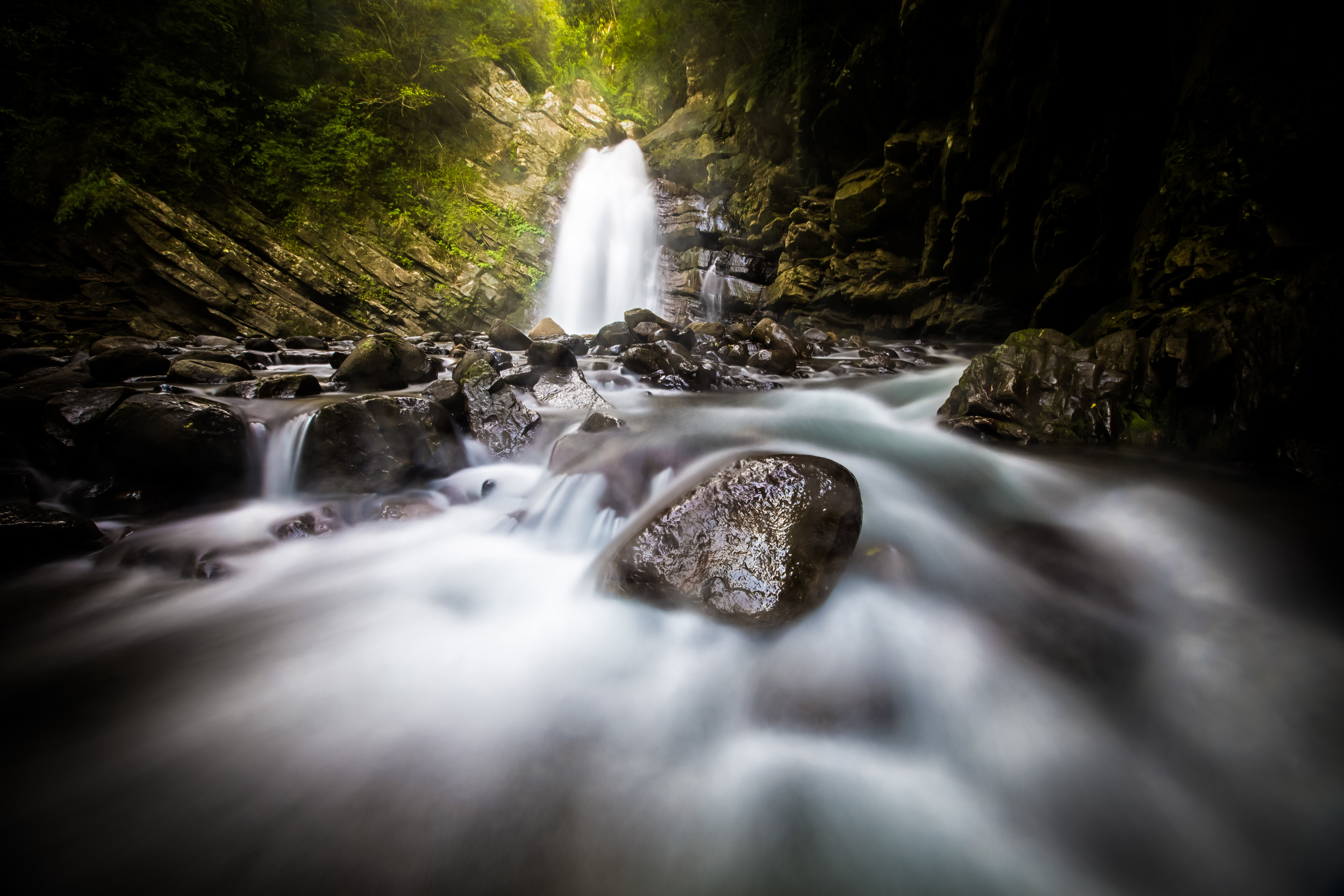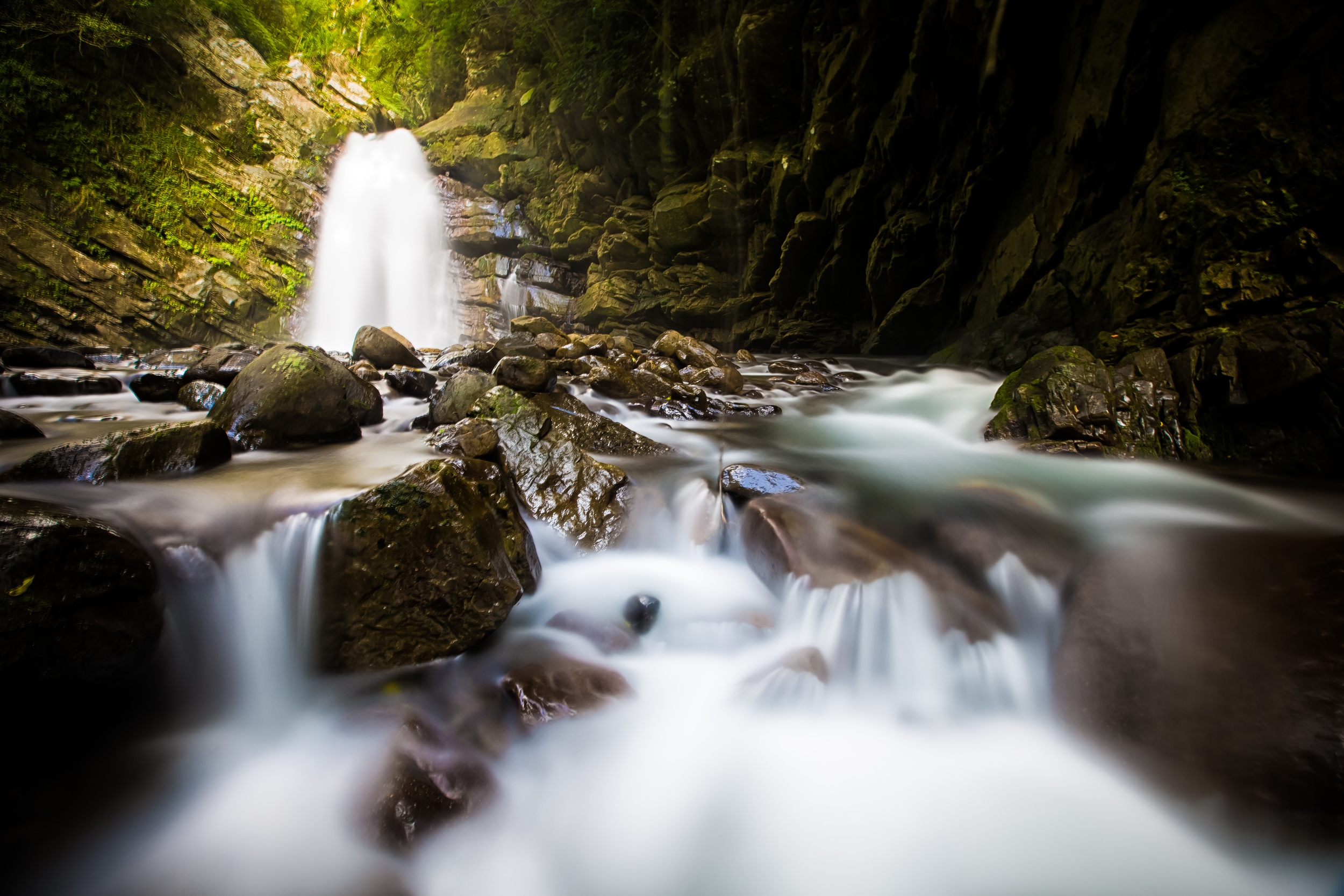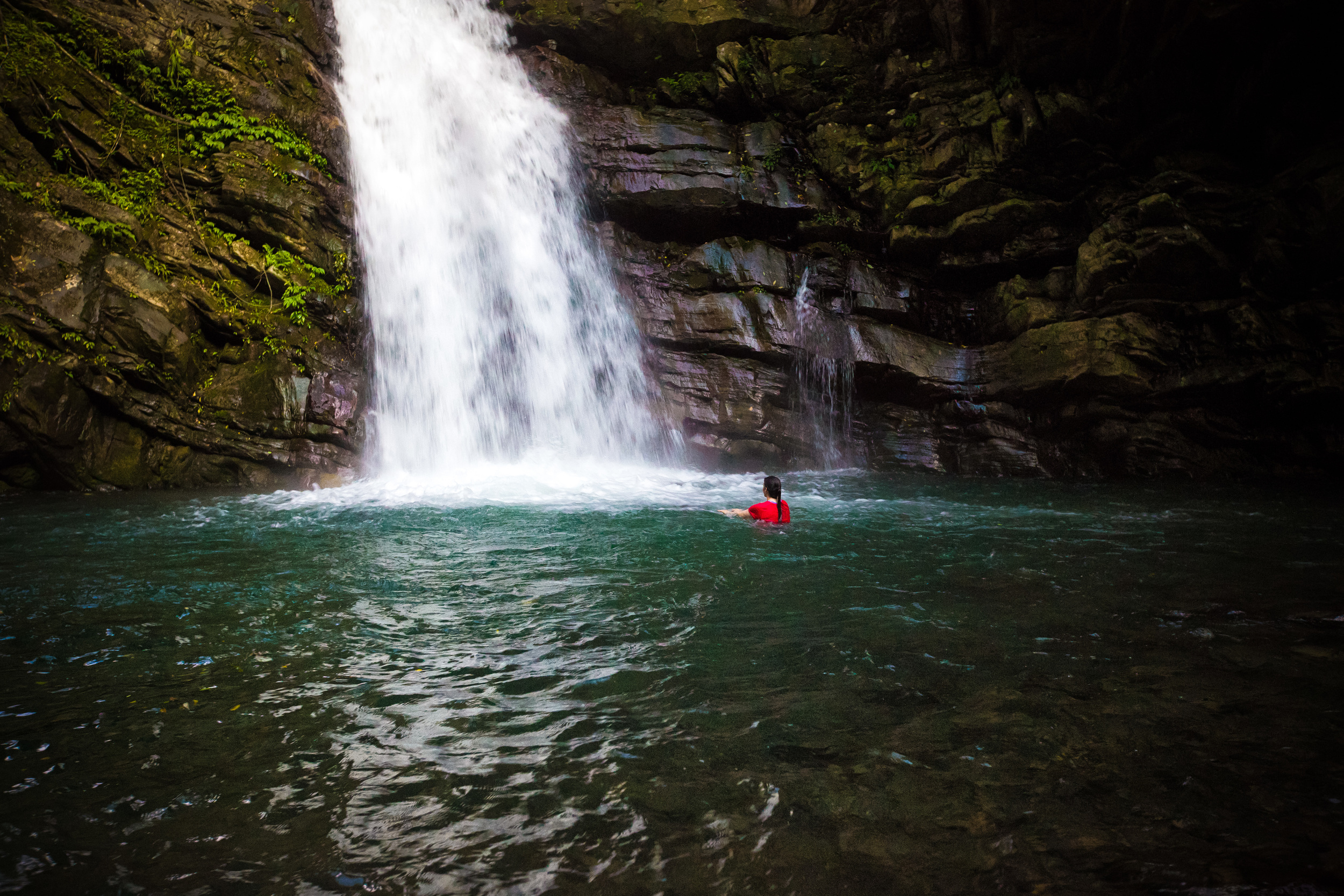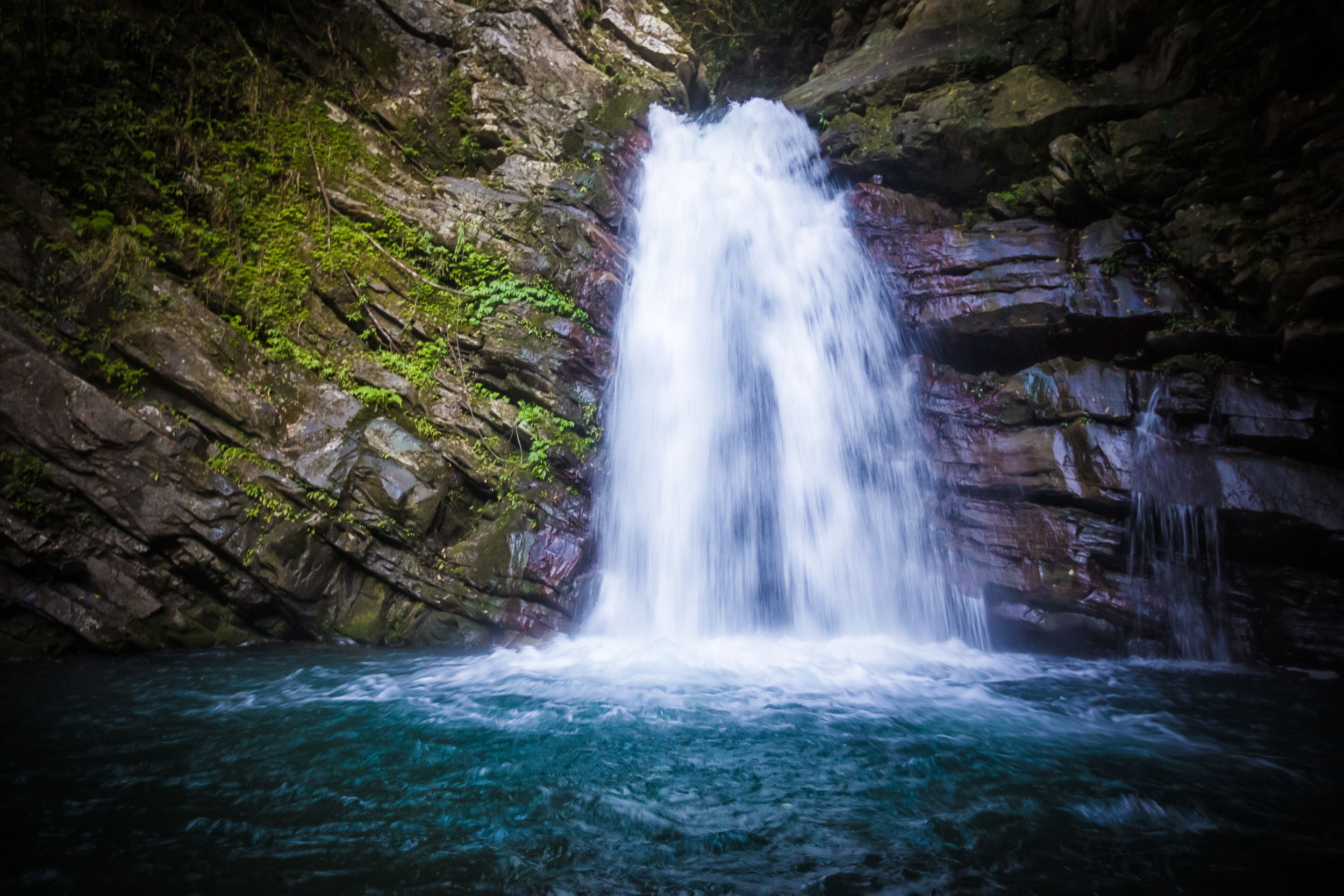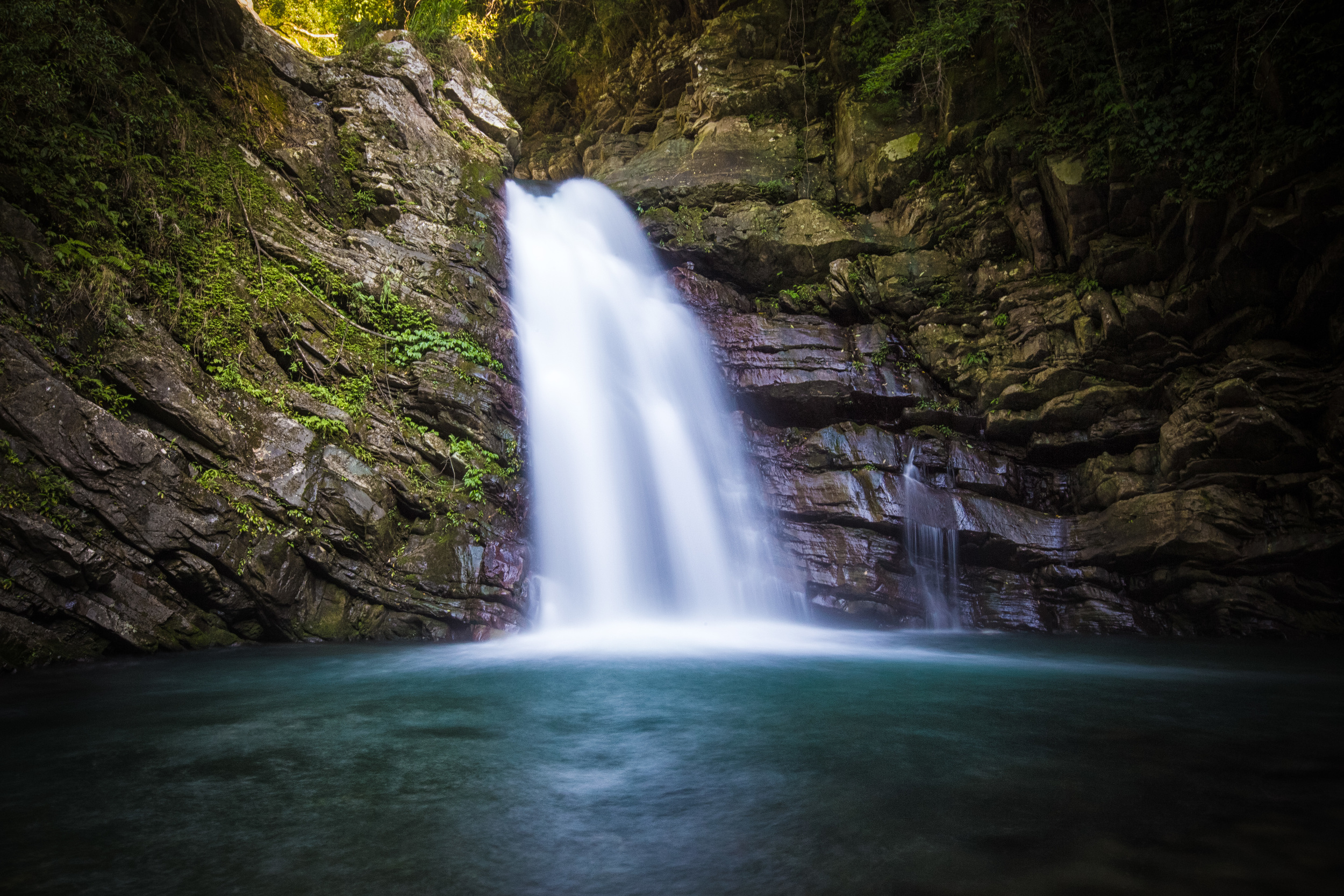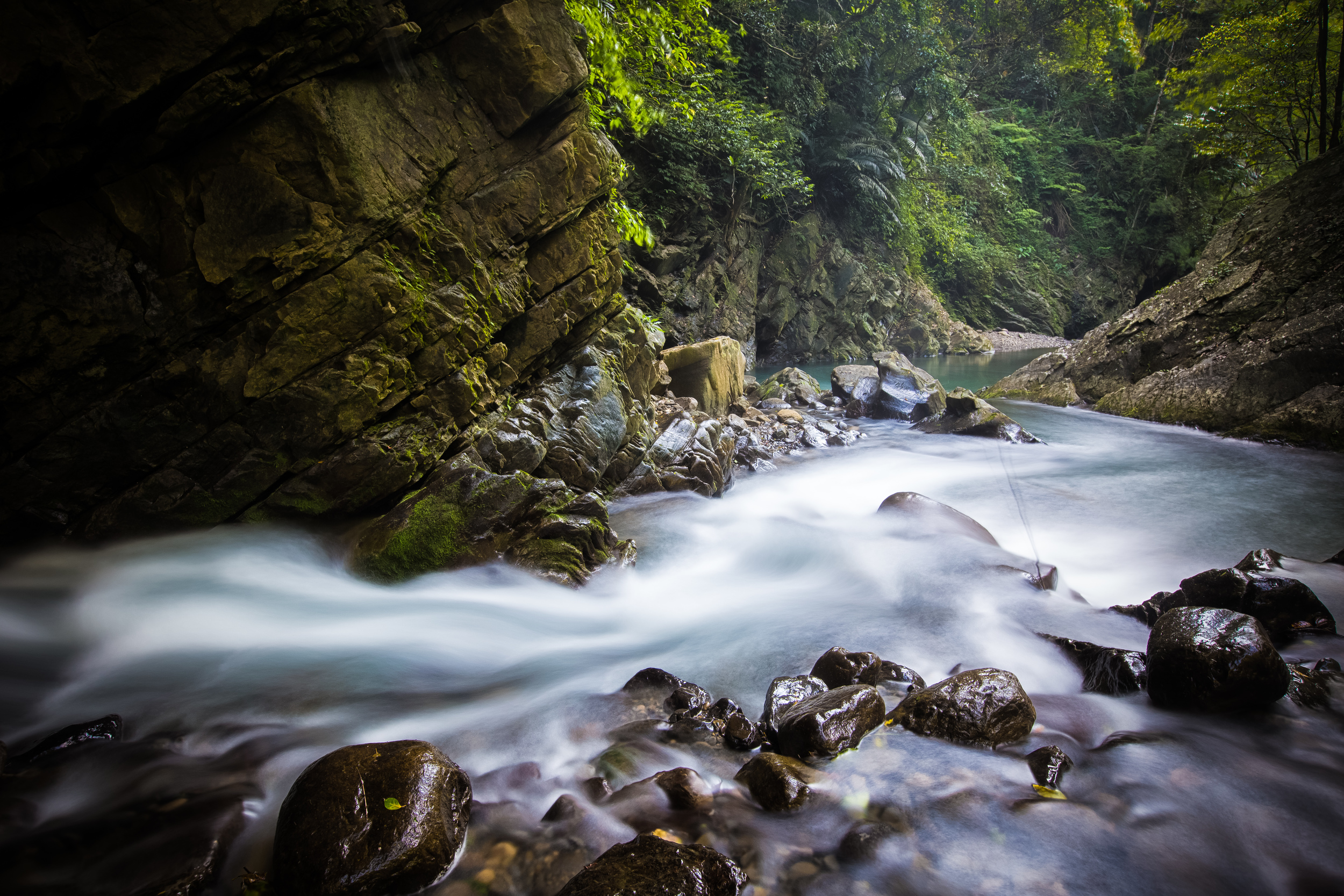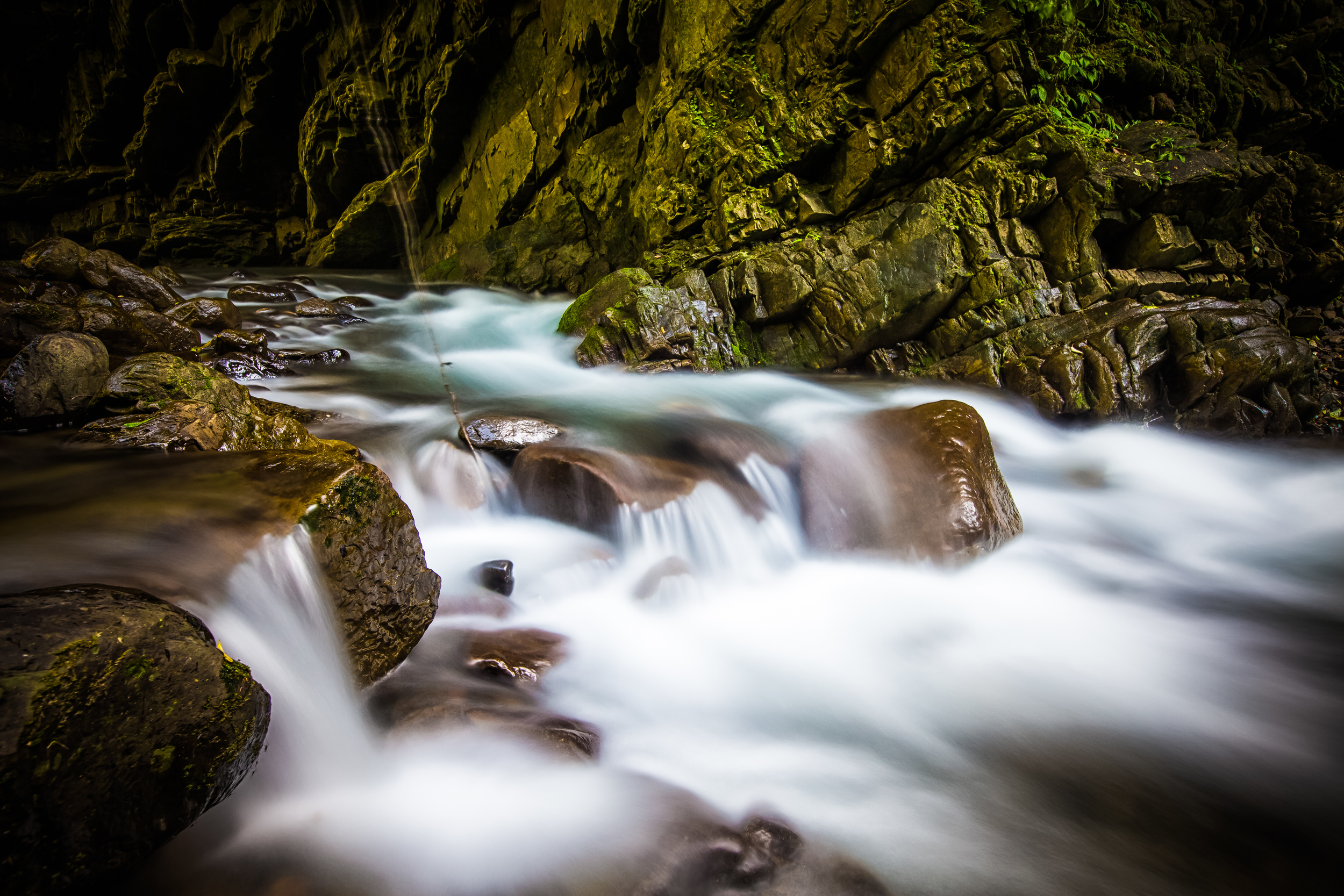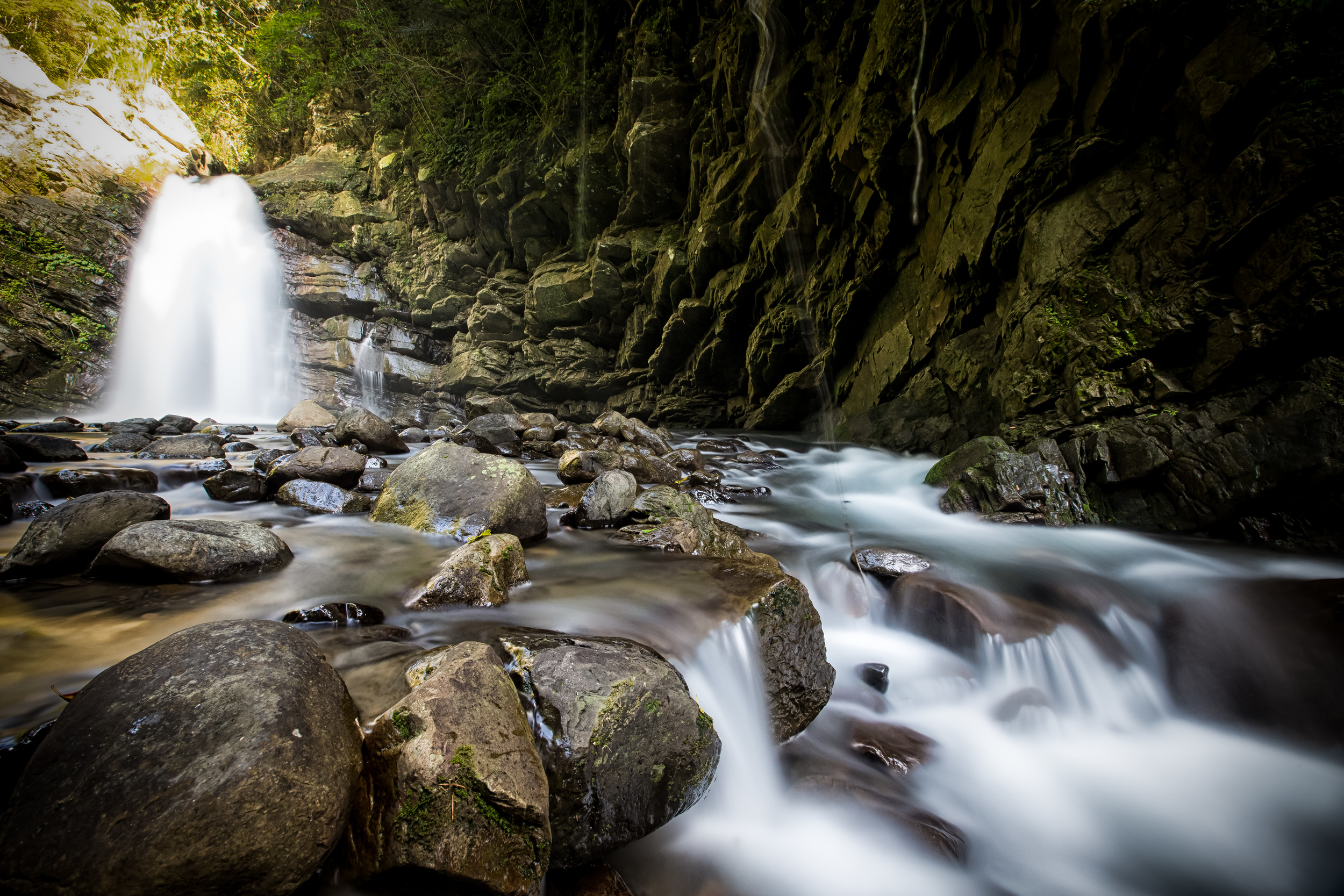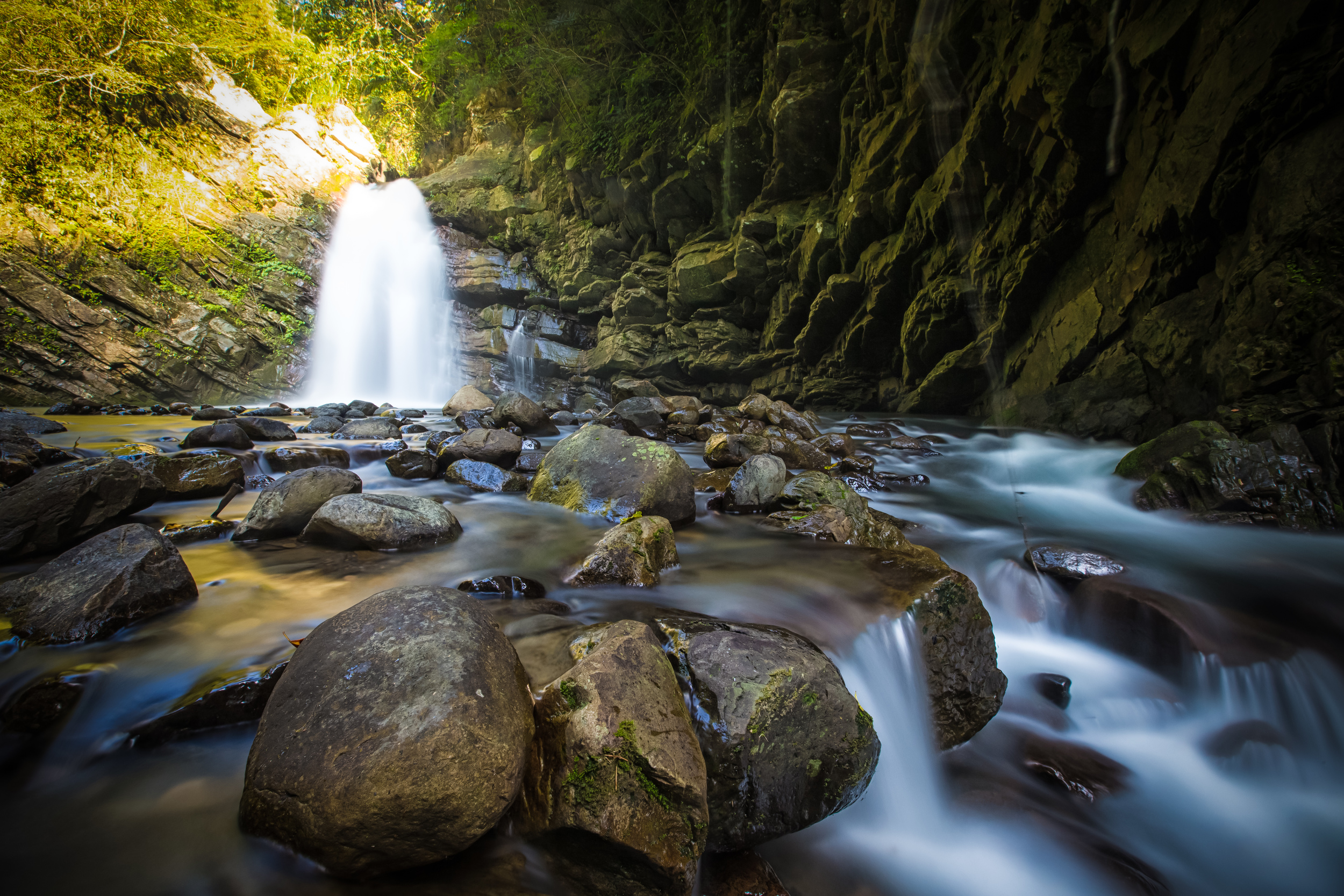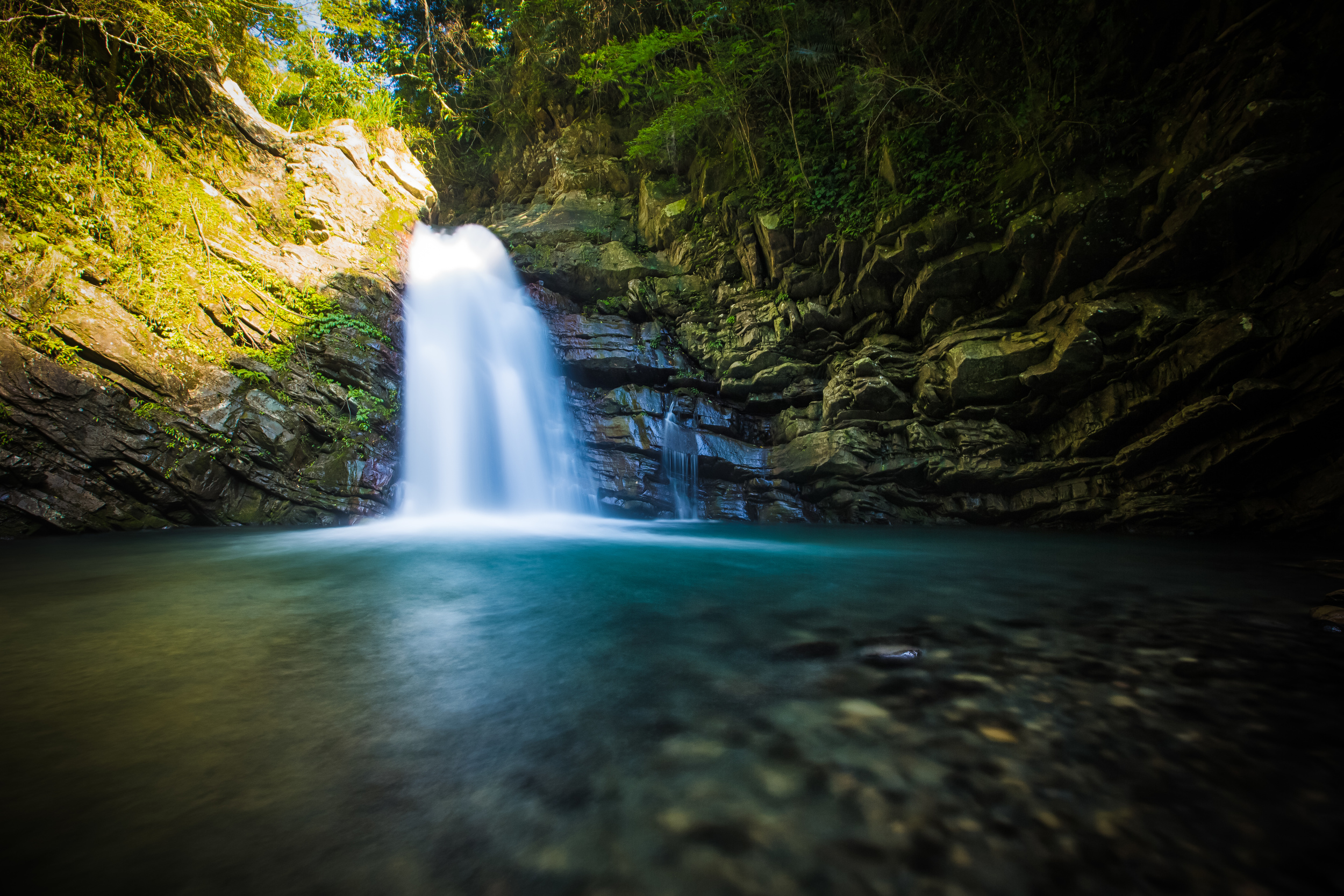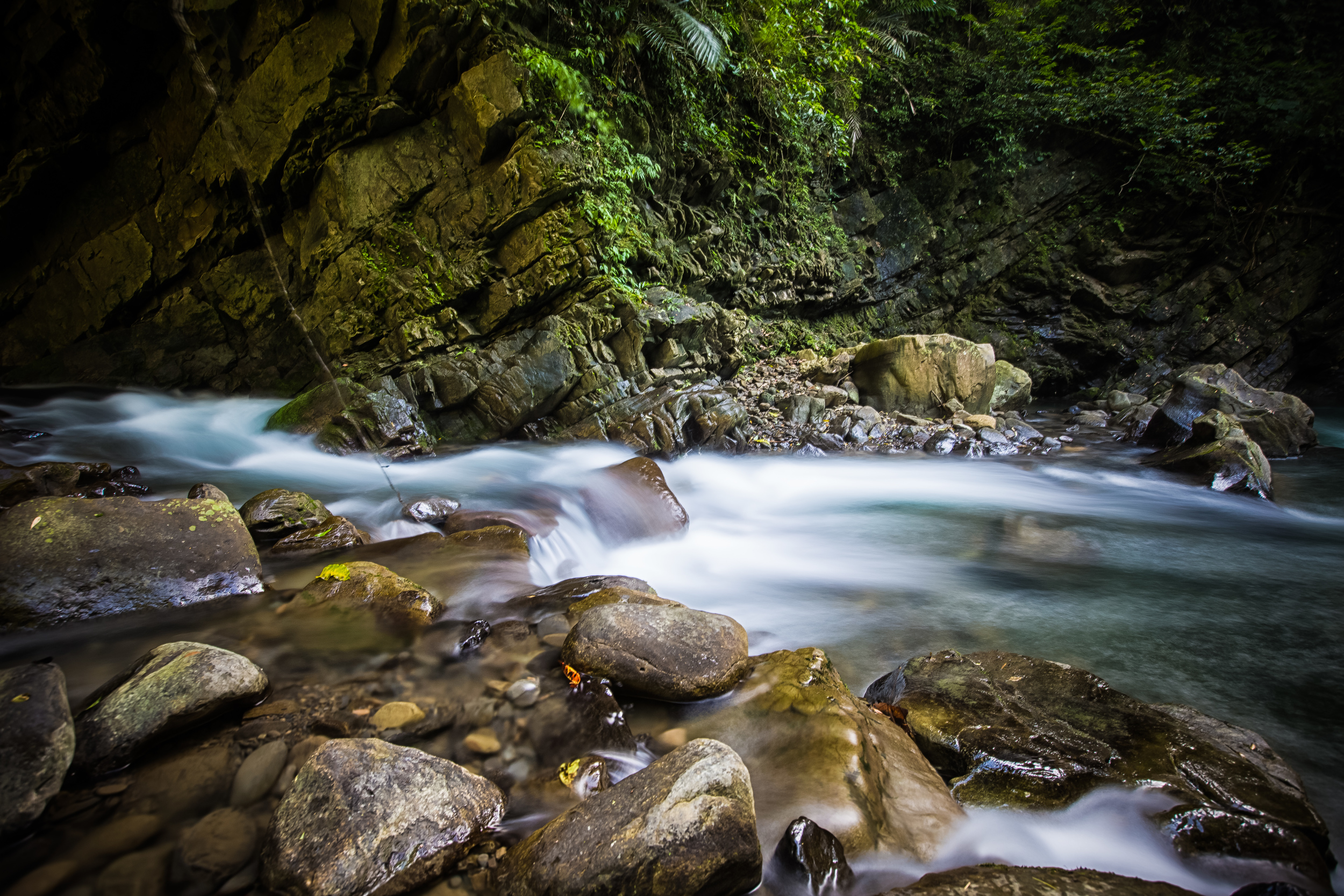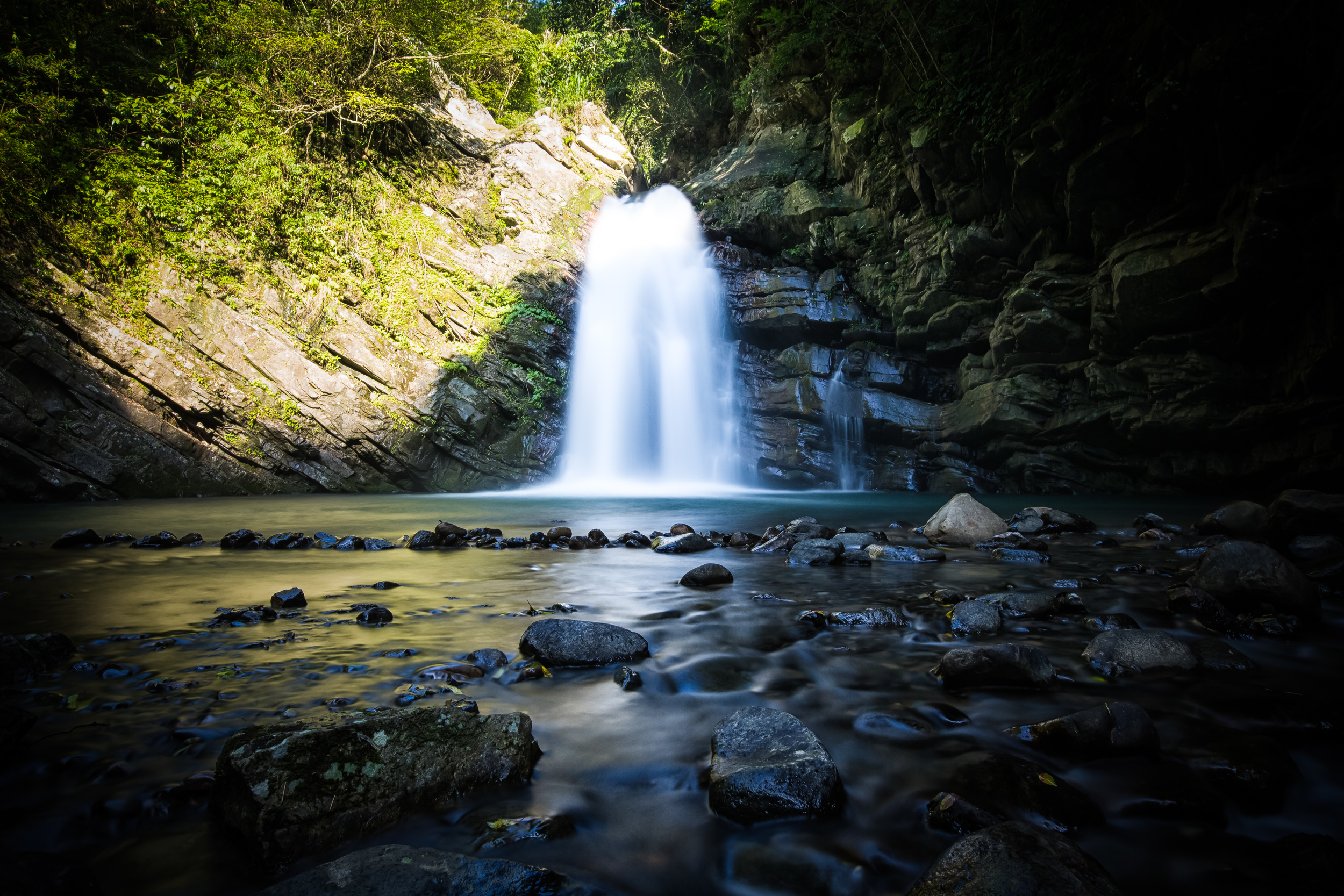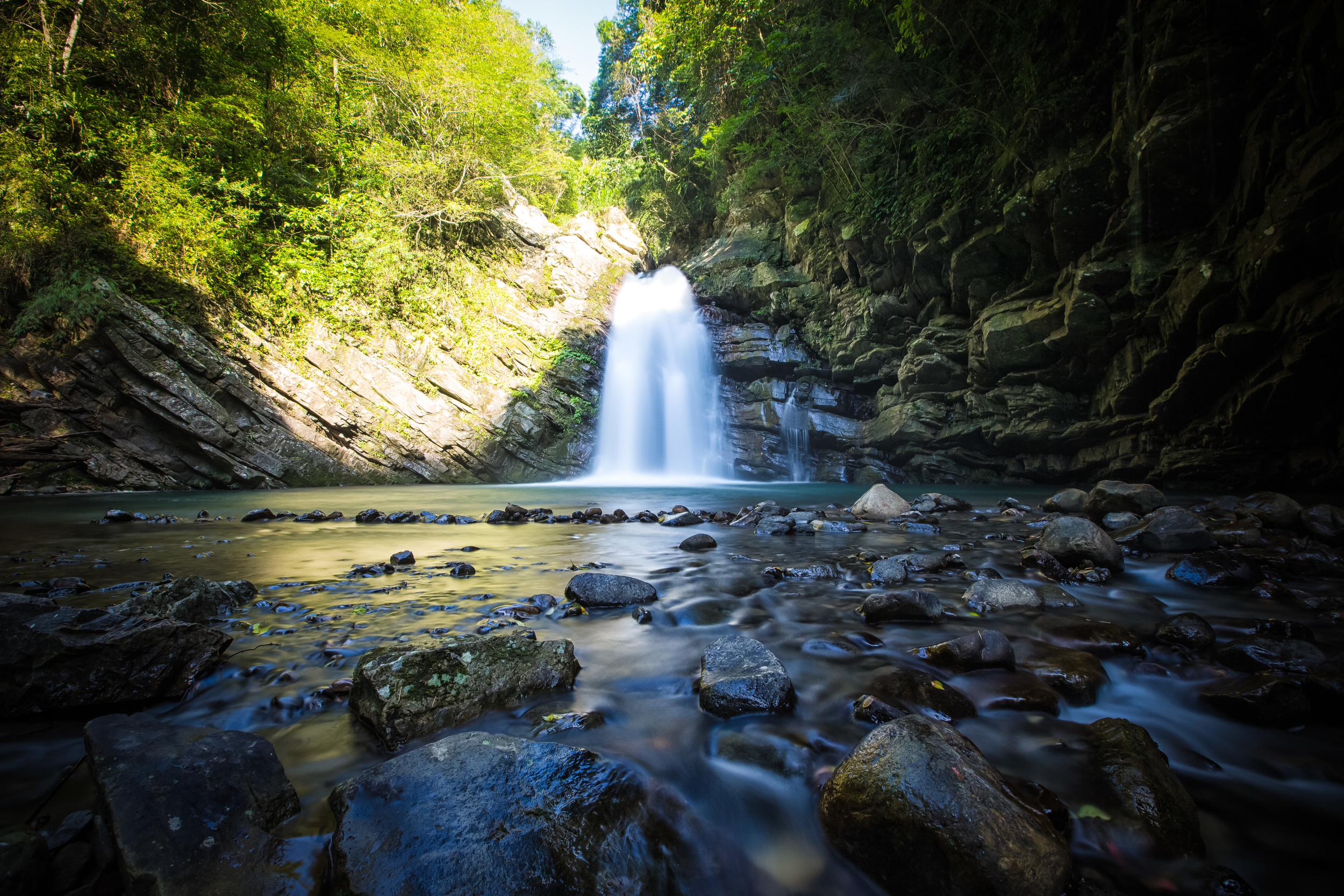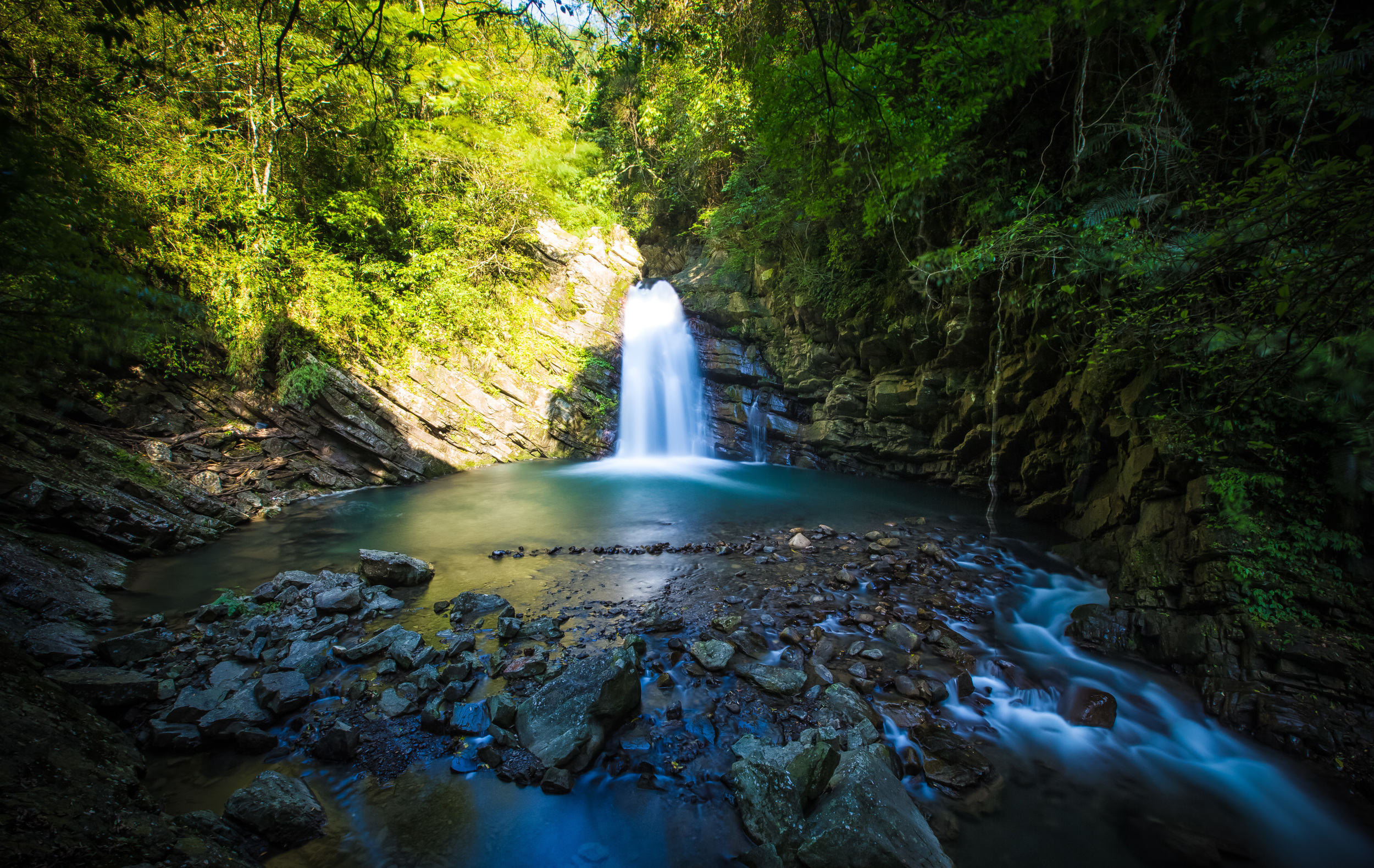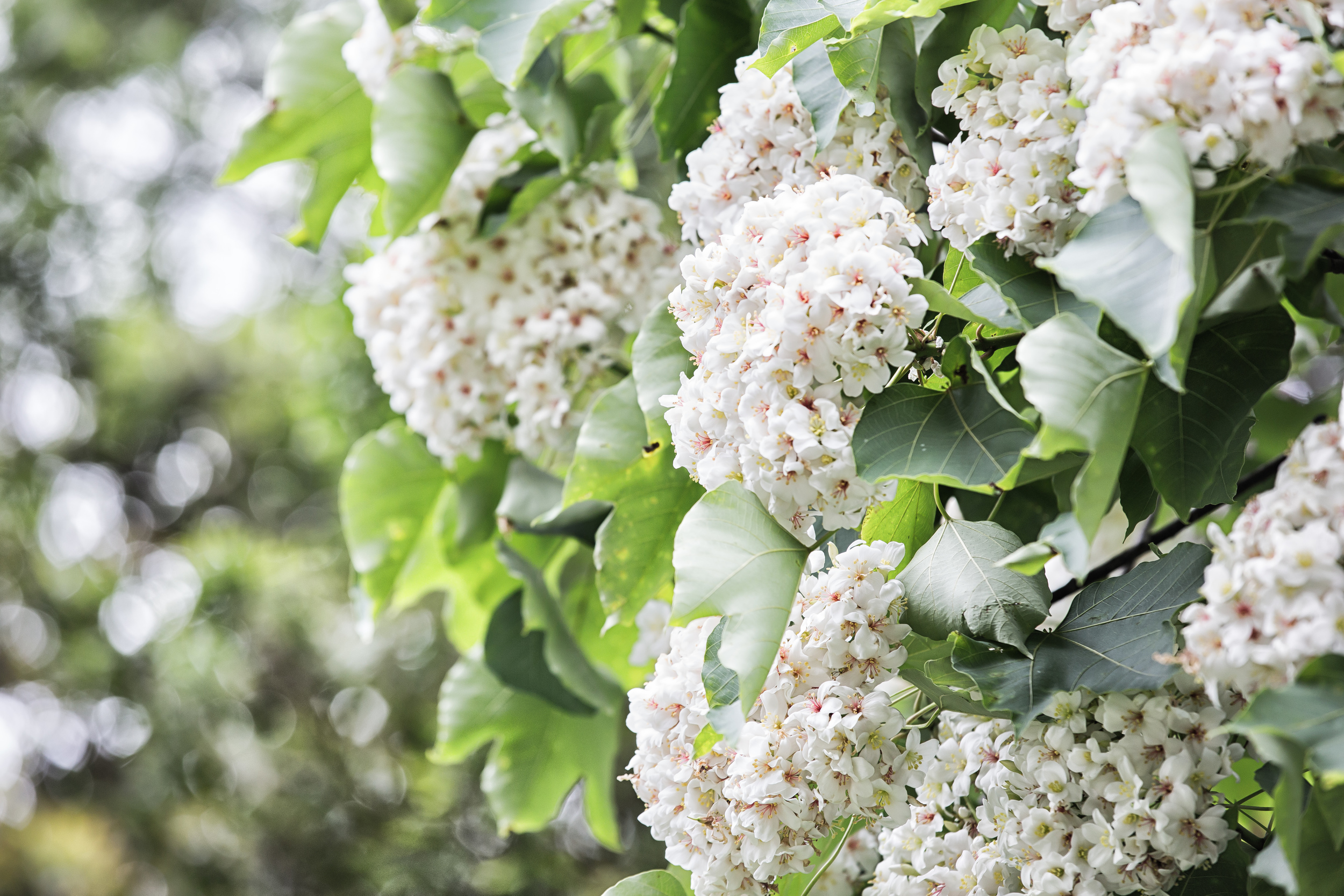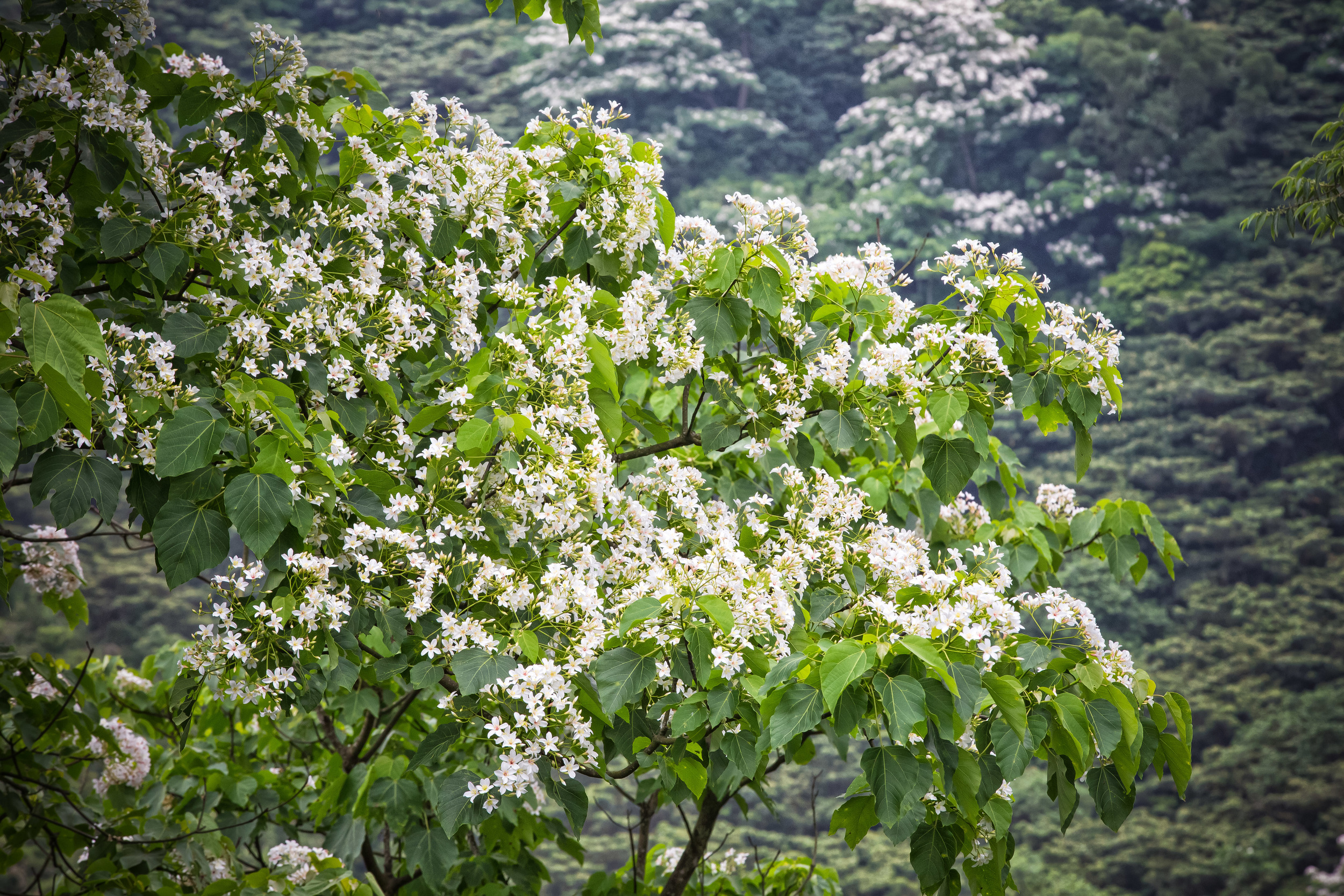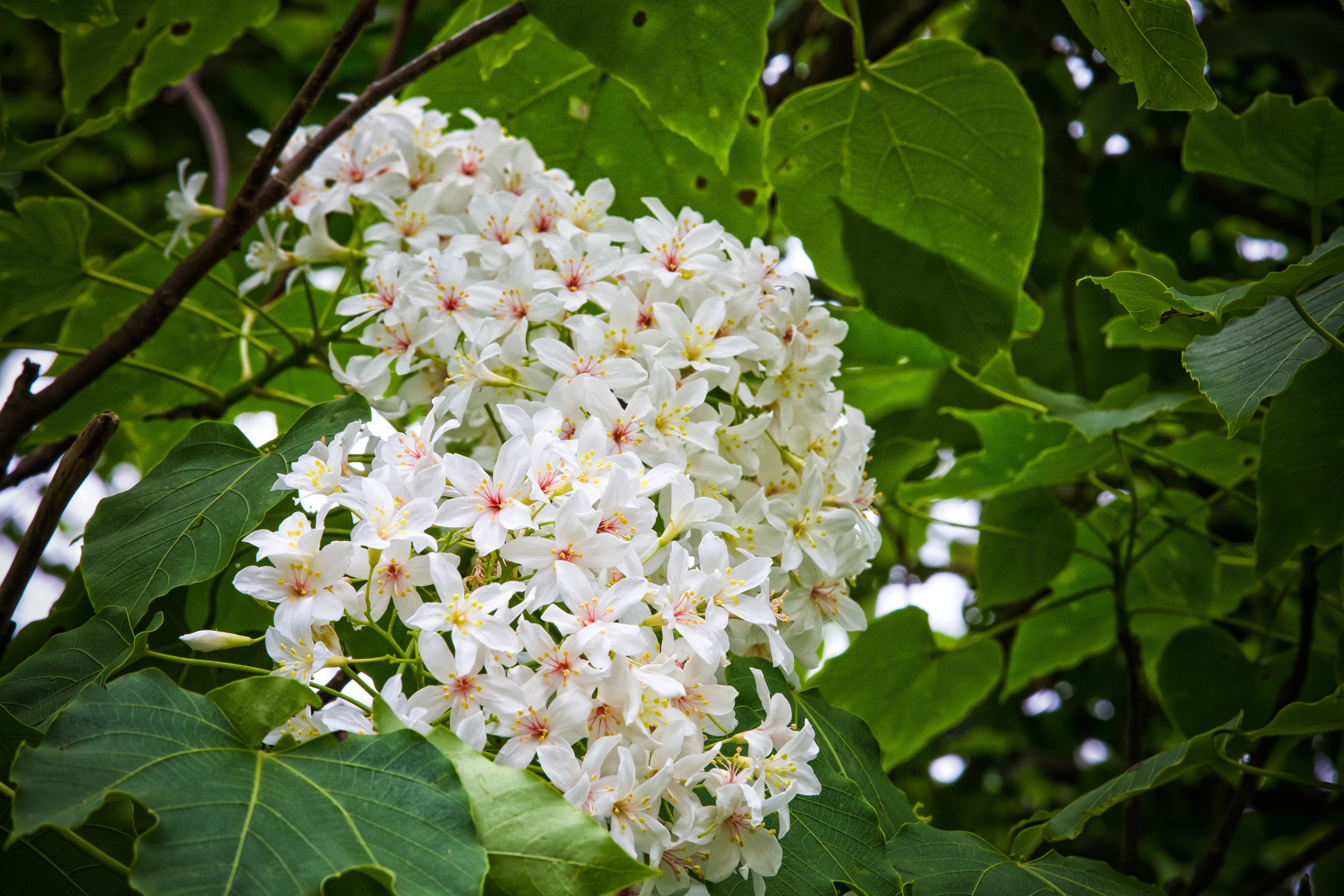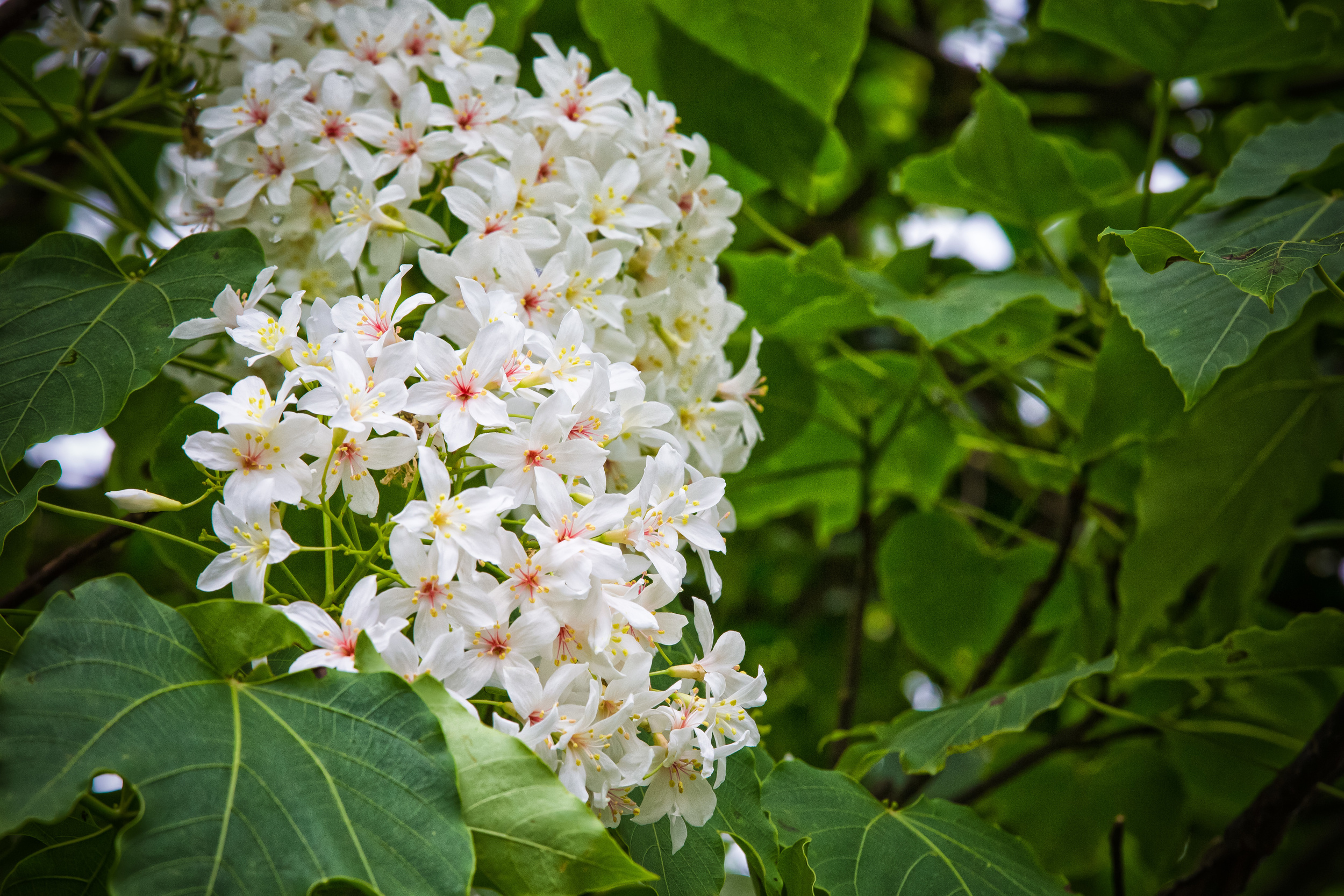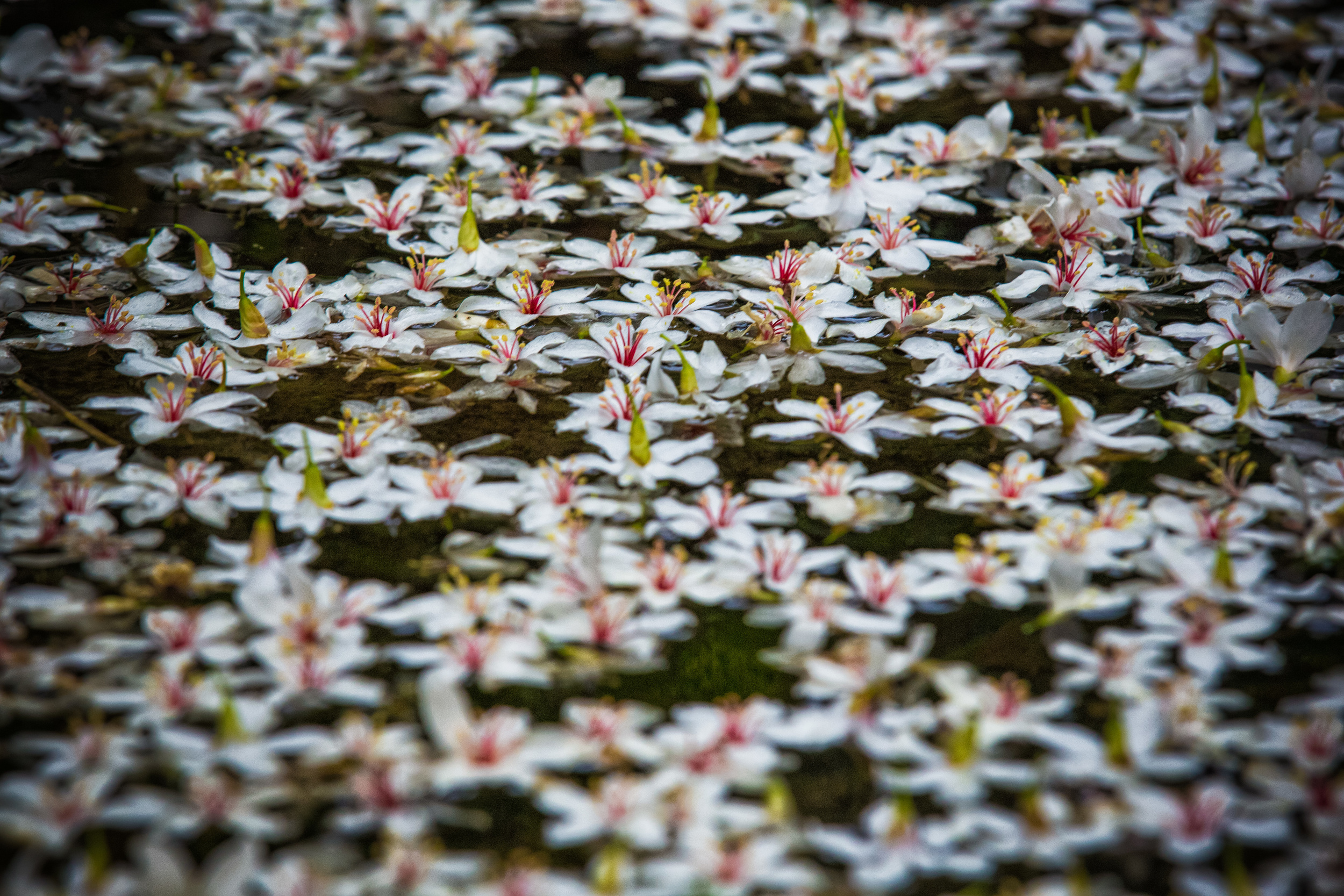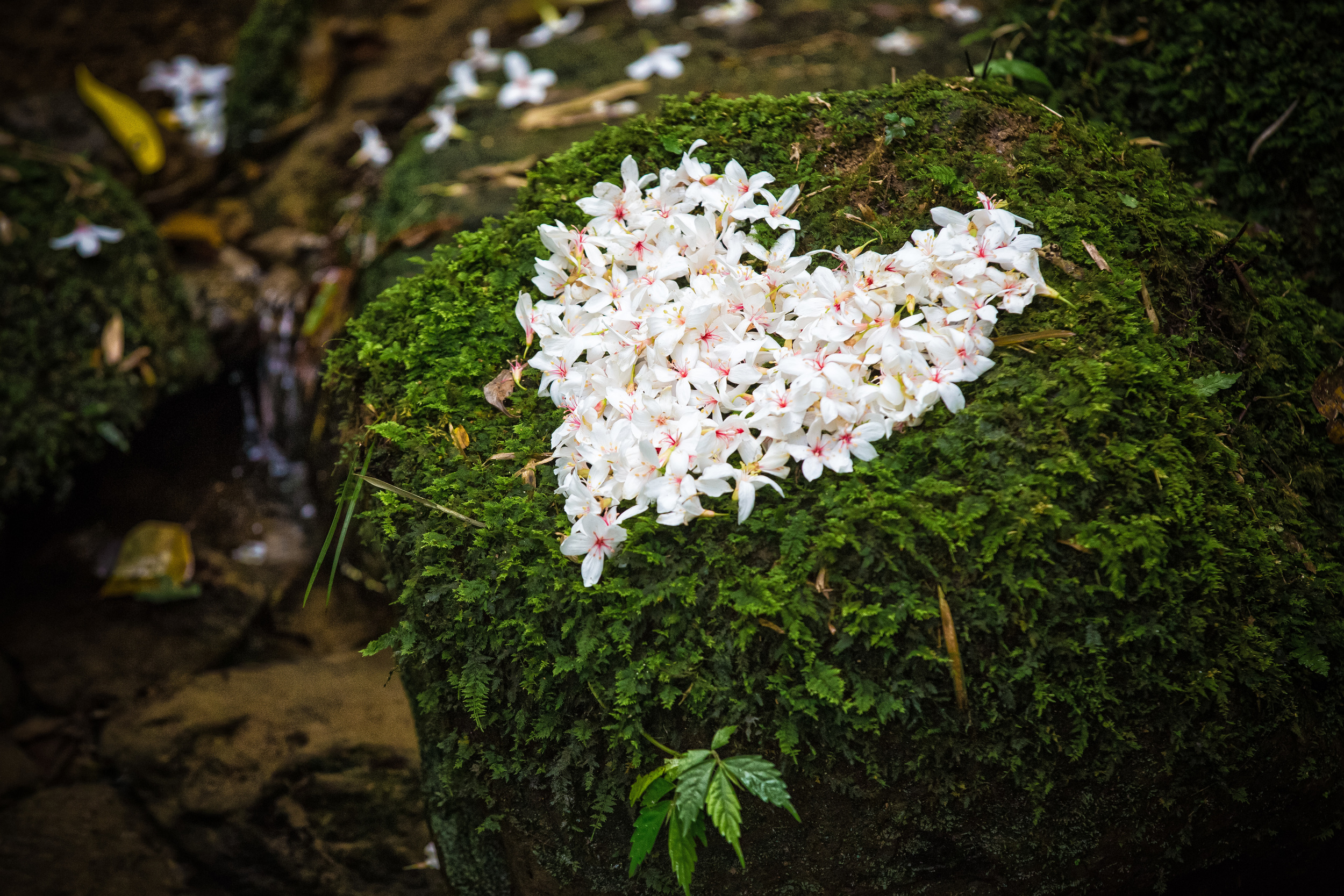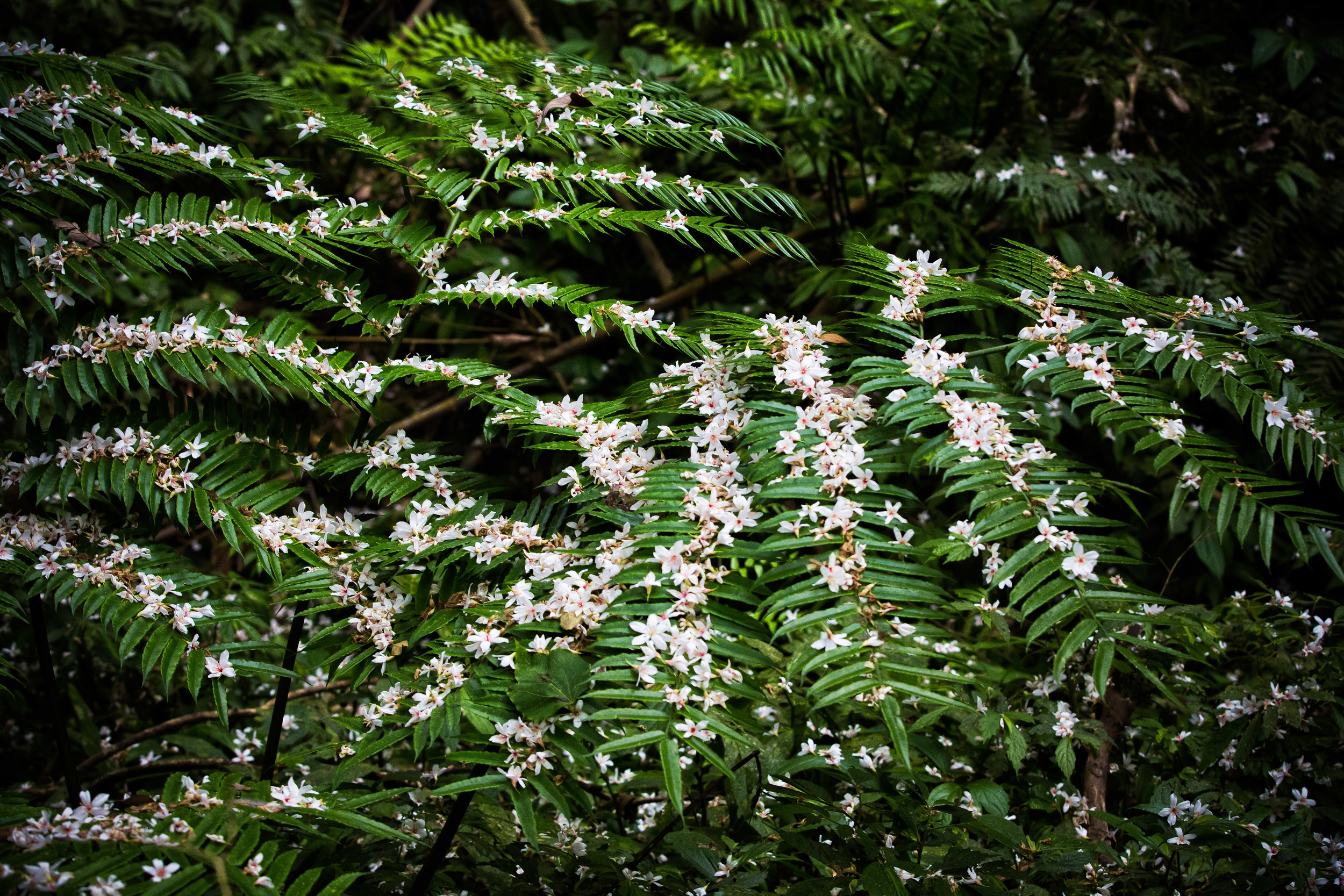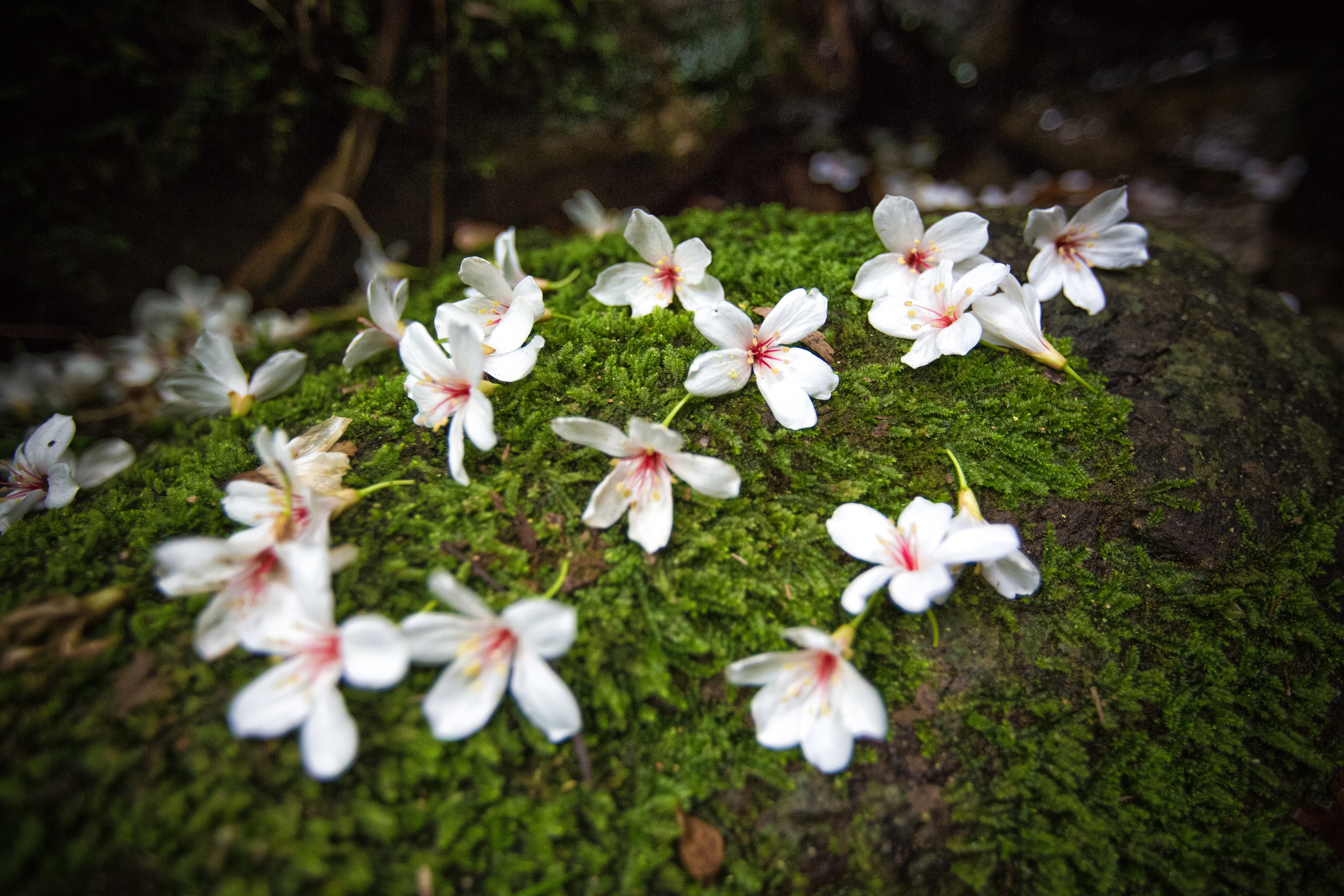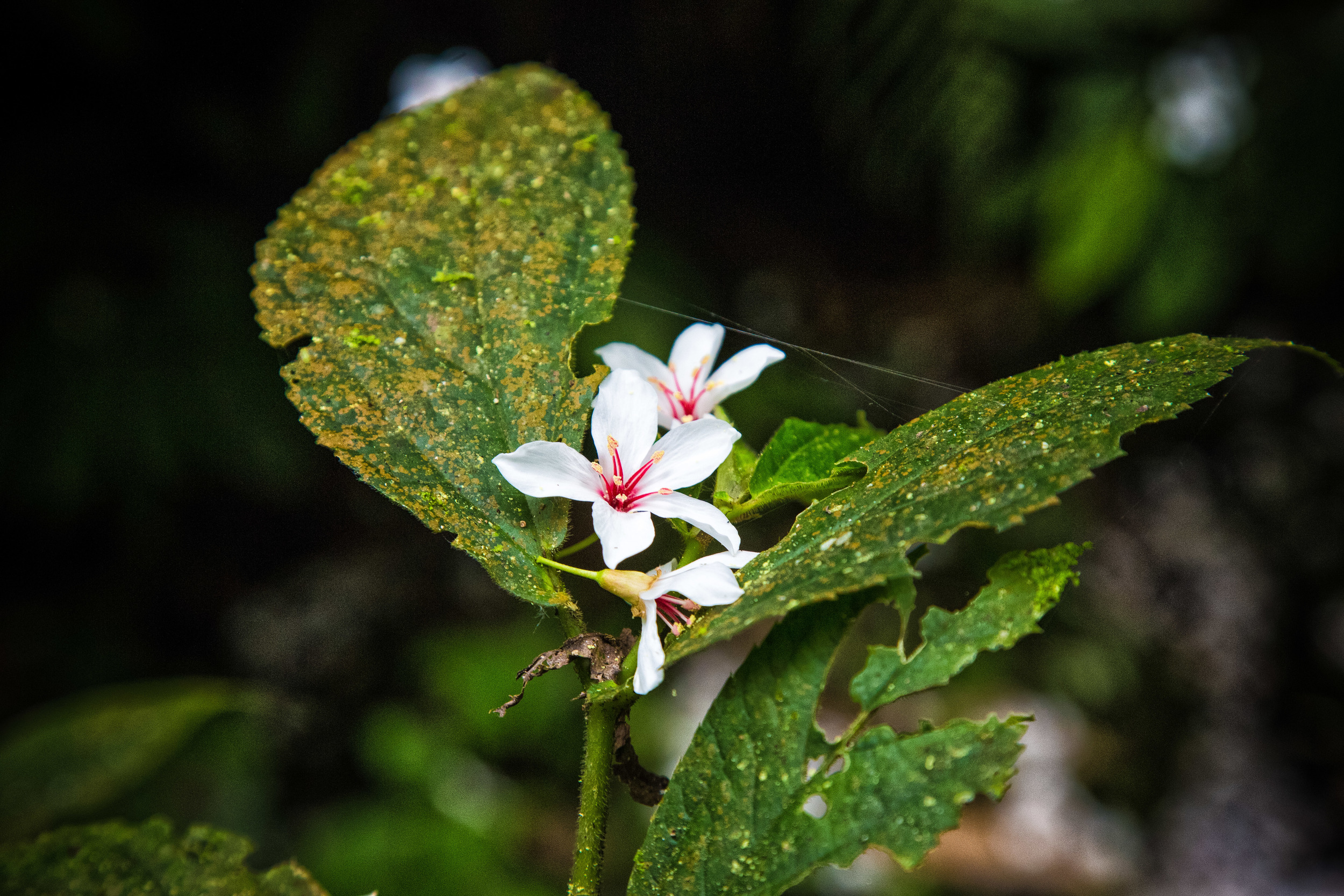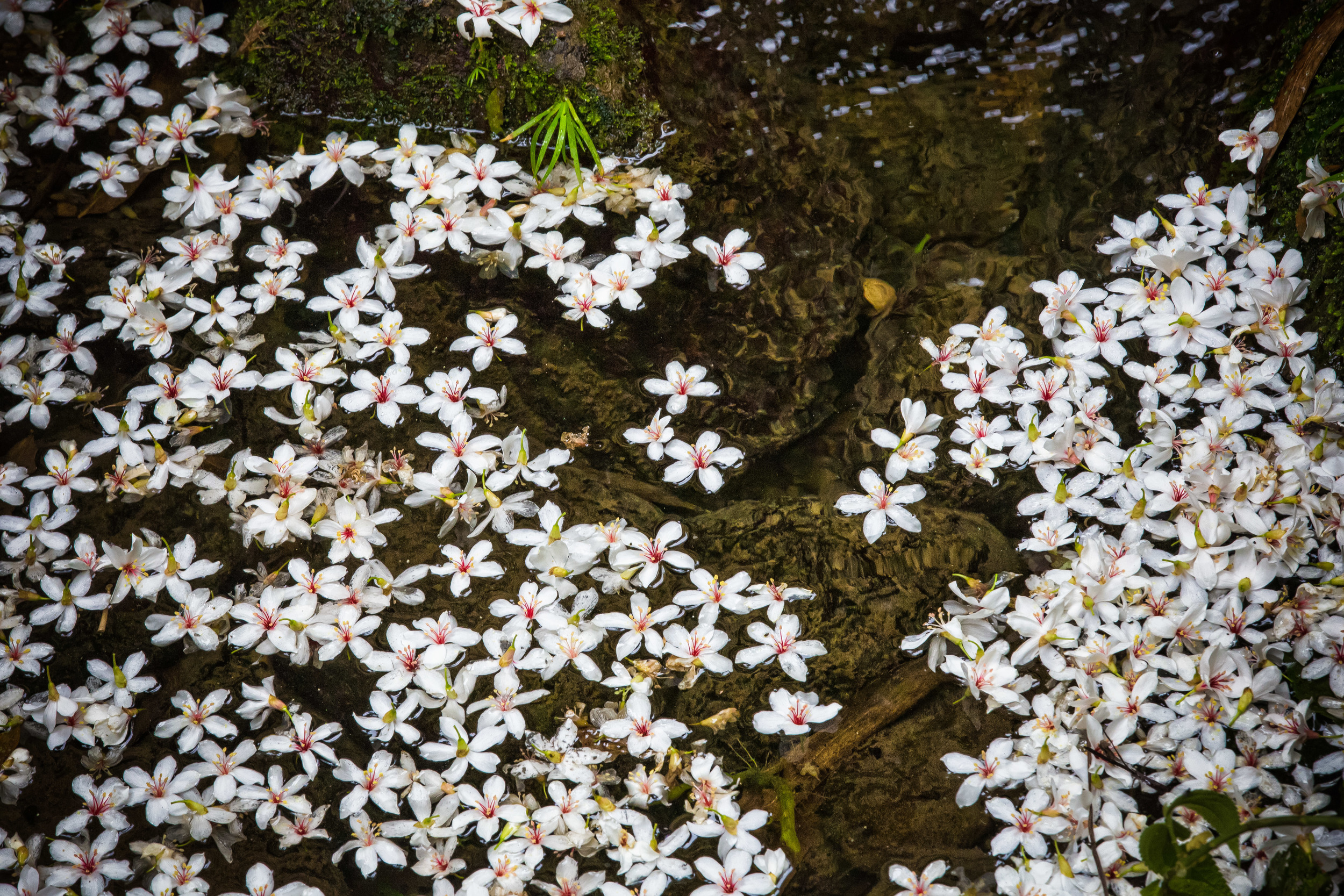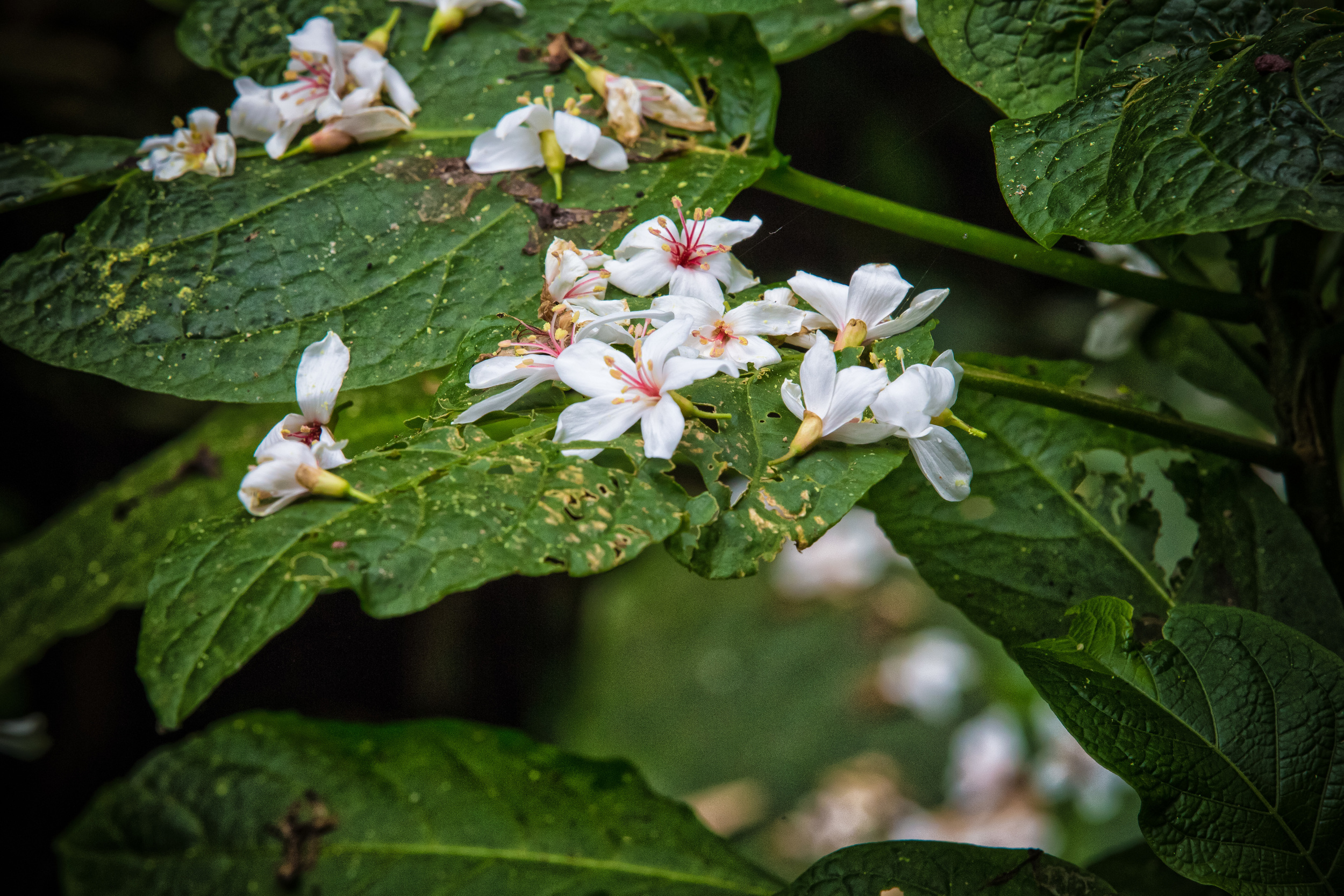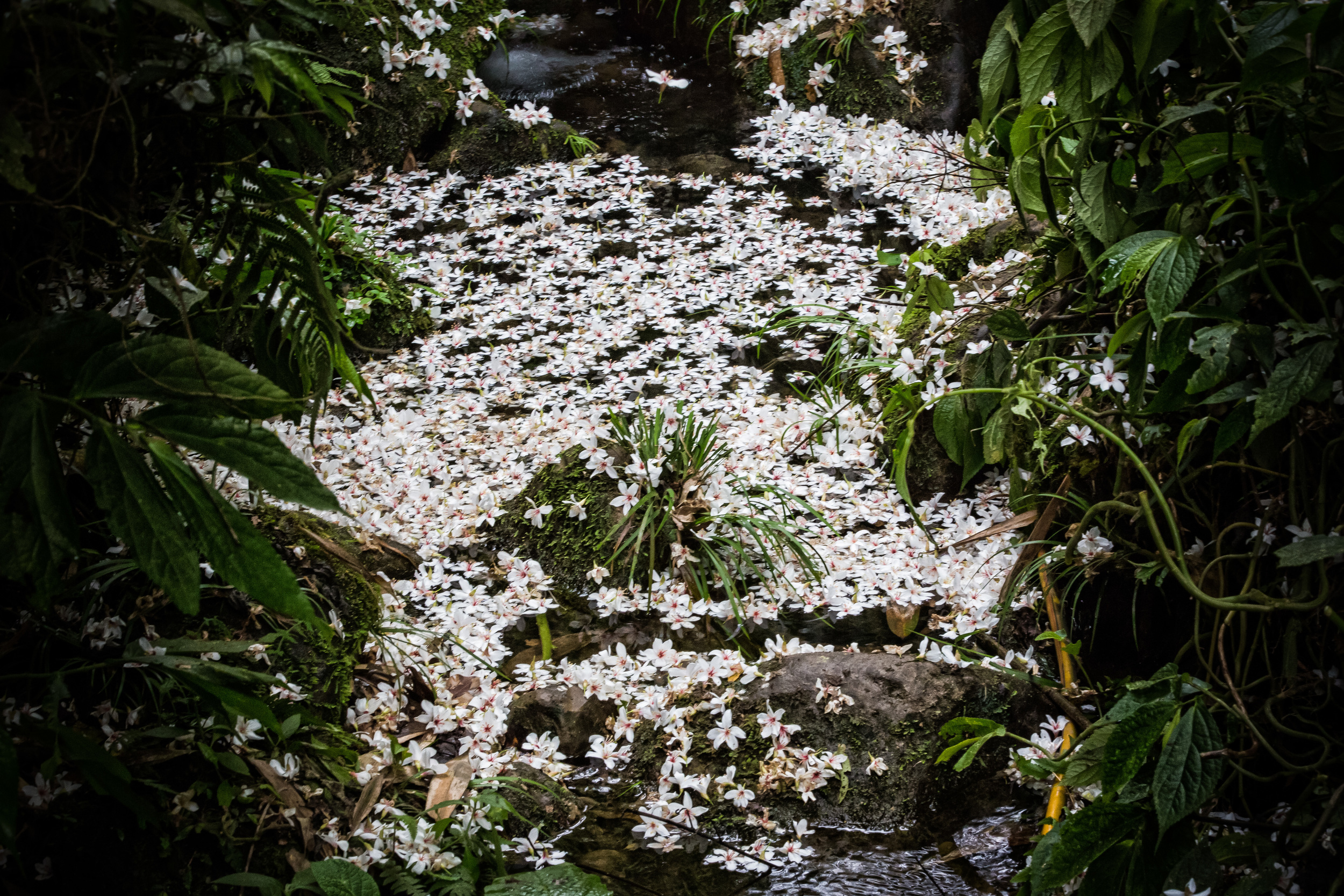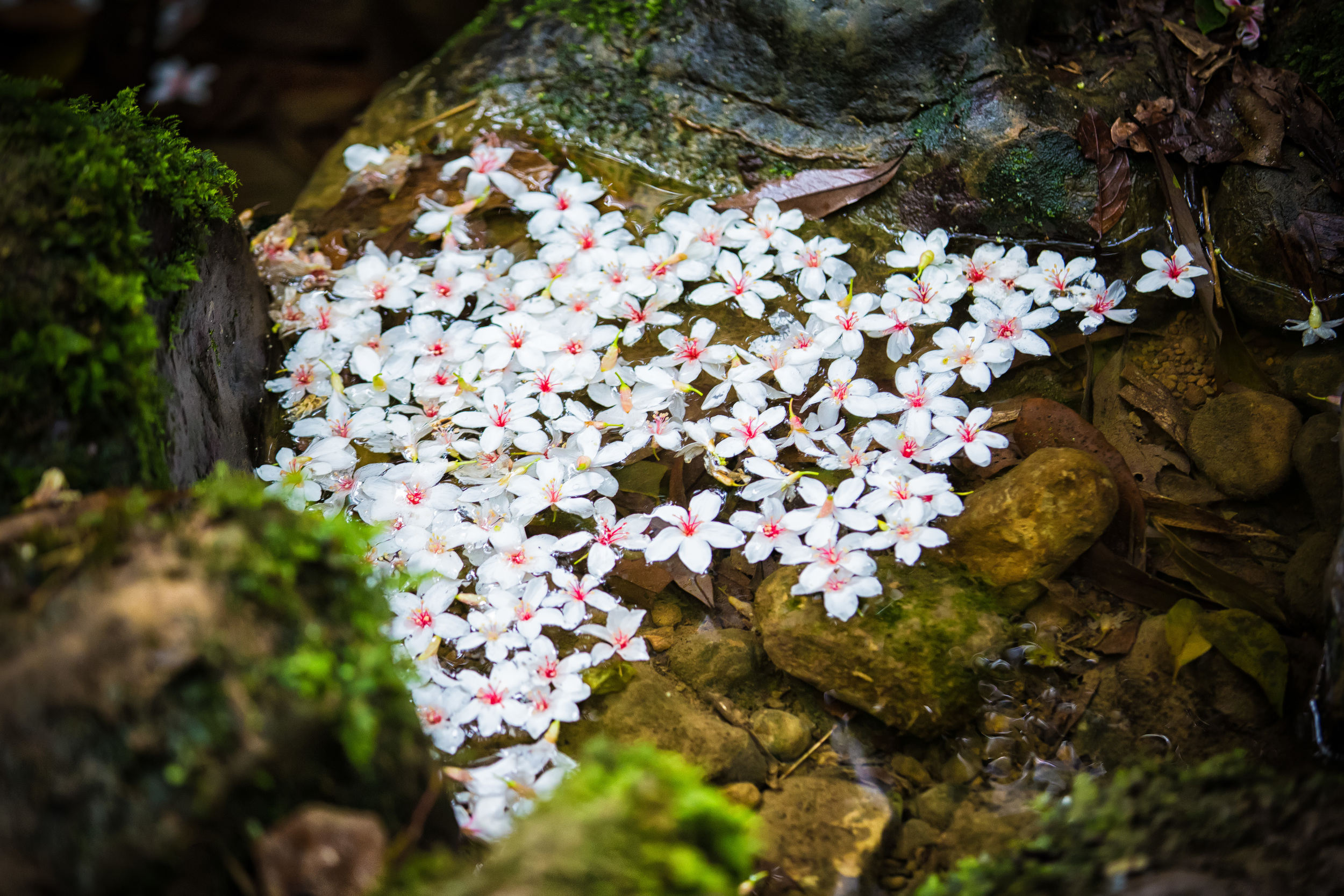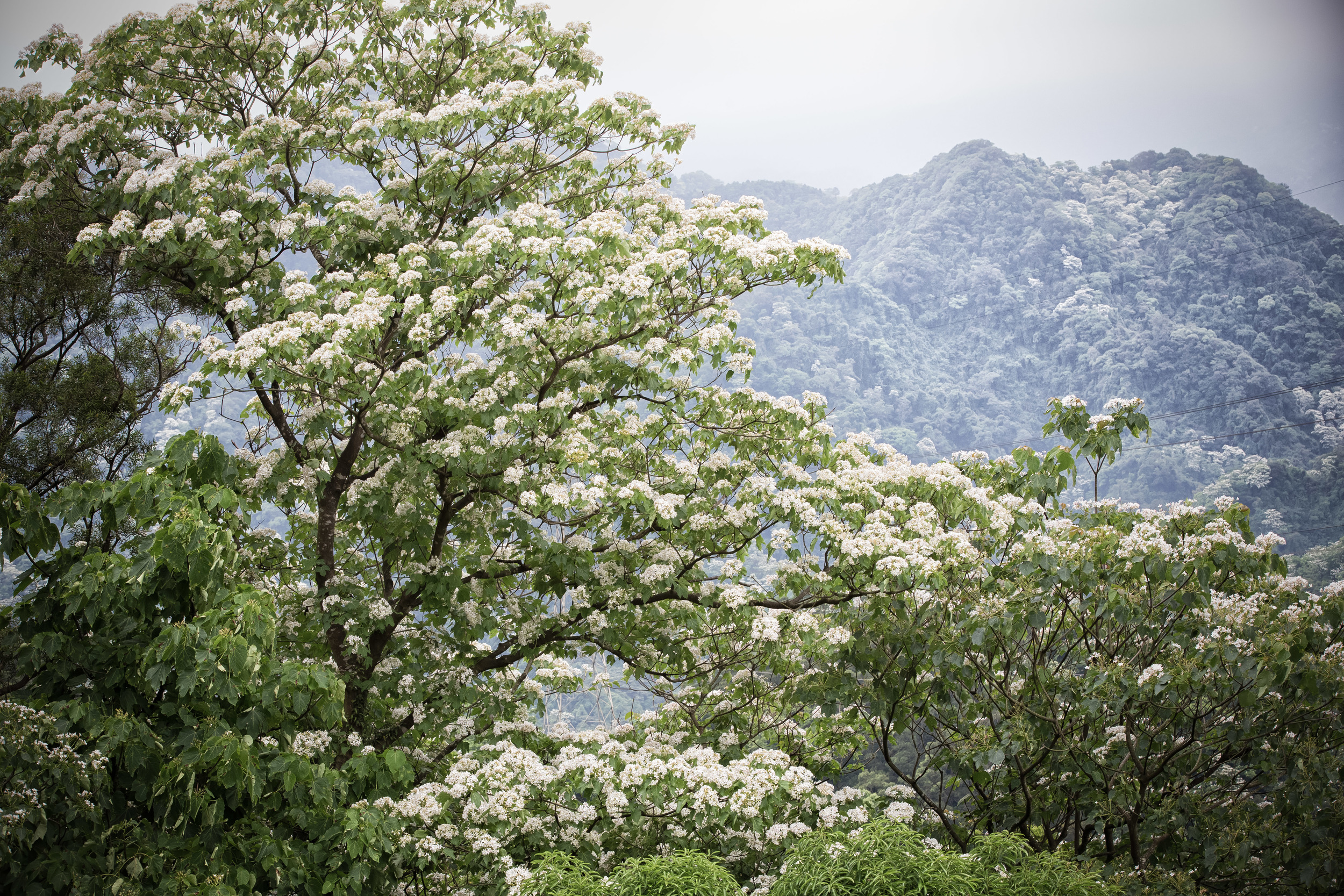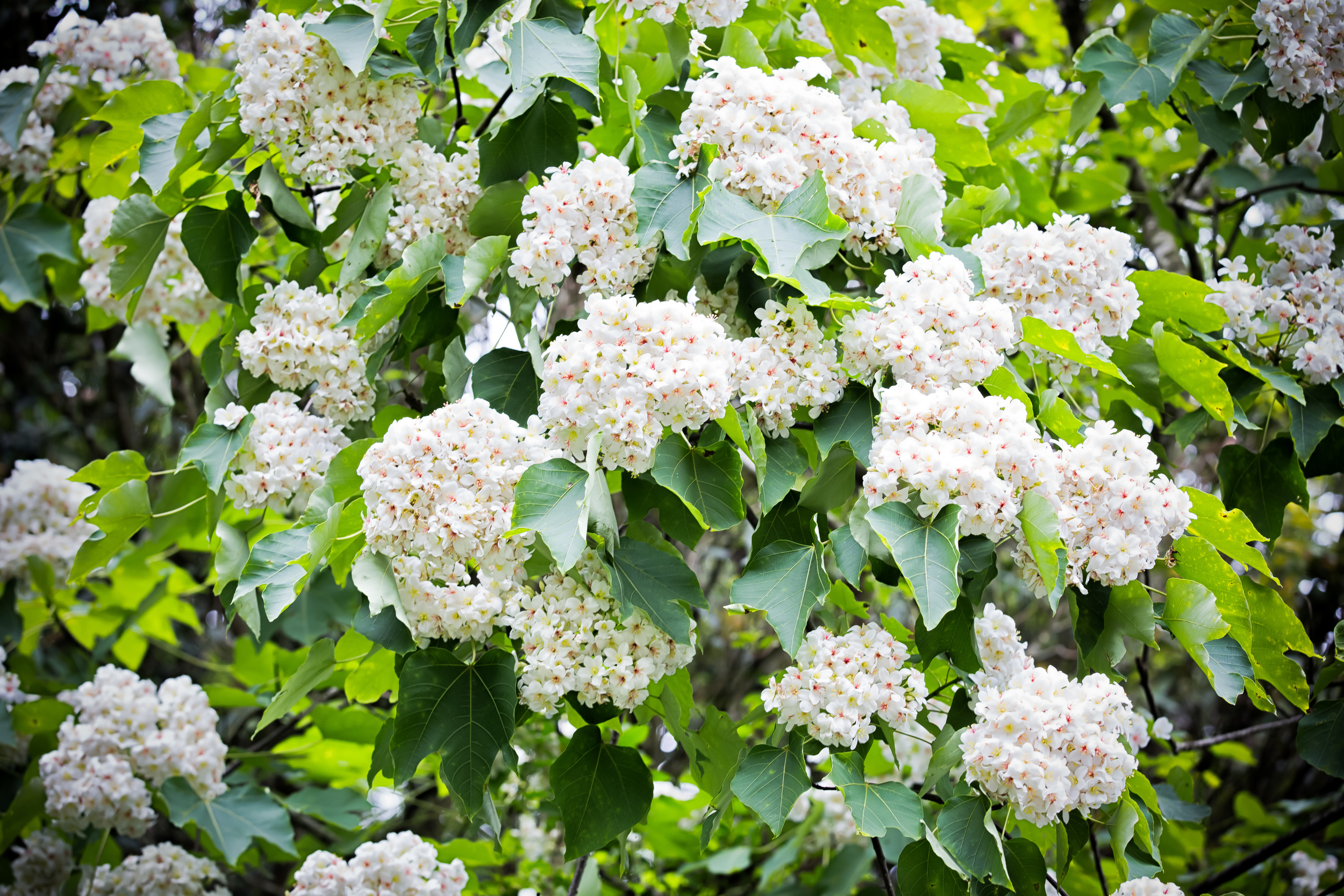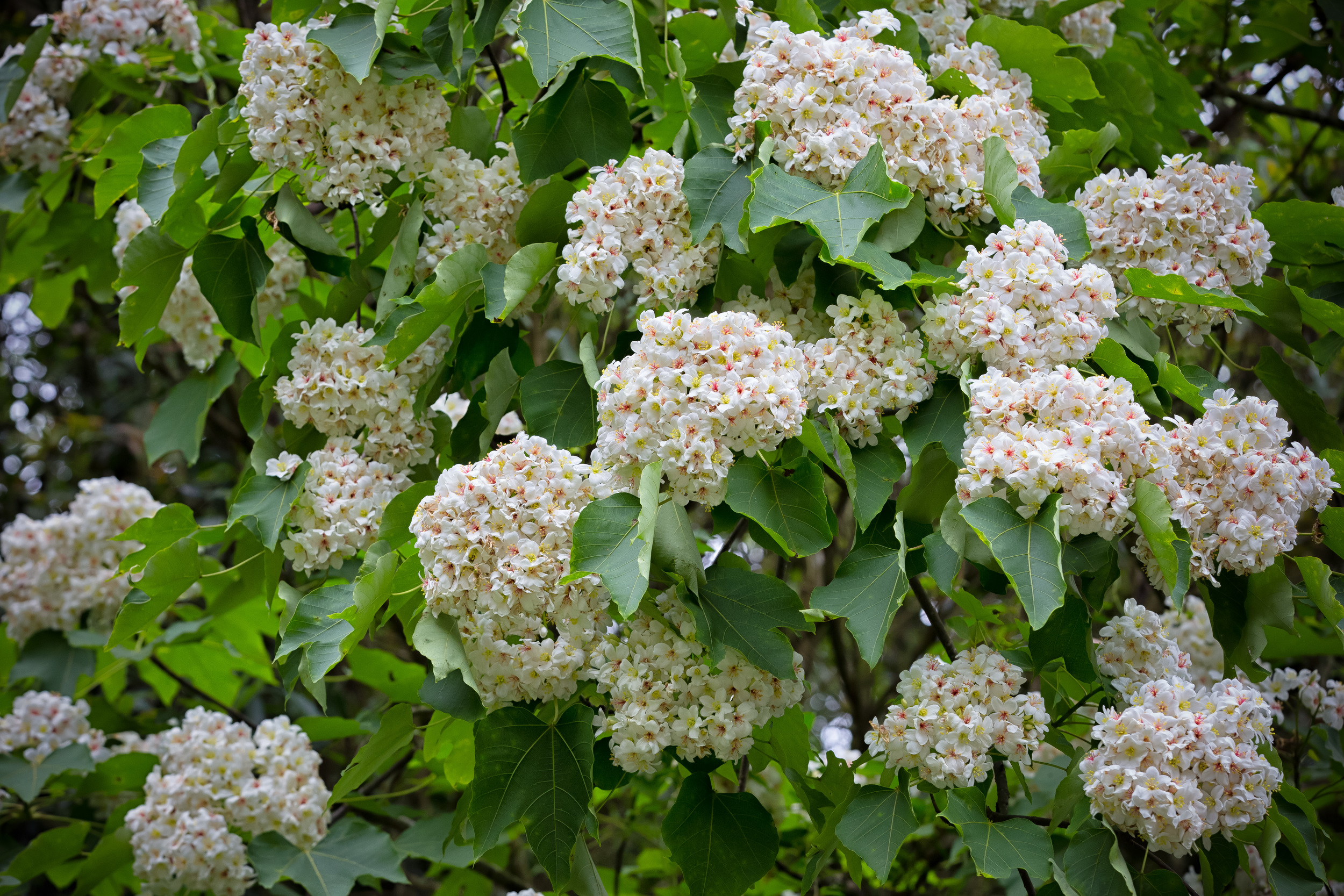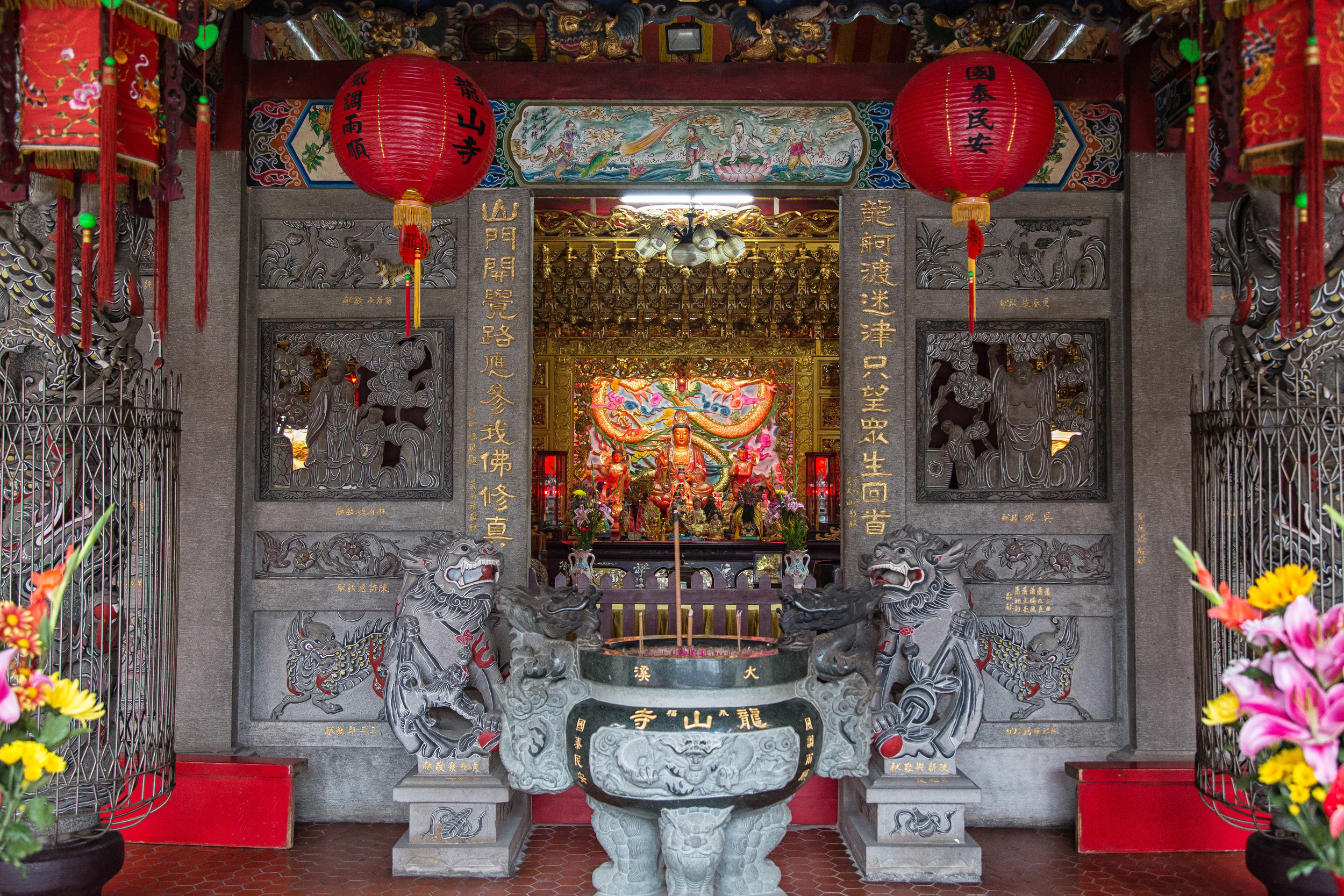Tie-Mu Waterfall (鐵木瀑布) which translates literally as "Iron Wood Waterfall" is a beautiful waterfall in Taoyuan's mountainous Fuxing Village (復興鄉) in an area between the popular Dongyanshan Forest Park (東眼山森林遊樂區) and Xiao Wulai Waterfall (小烏來瀑布) and makes for an excellent side trip if you're in the area or even an excellent place to escape the hot summer heat for a swim in a chilly mountain river.
The waterfall is a part of Xiayun River (霞雲溪), an important river that finds its source high in the mountains in an area between Dongyanshan (東眼山) in Taoyuan county and Manyueyuan (滿月圓) in New Taipei City. The river flows down into Taoyuan and eventually merges with the much larger Dahan River (大漢溪) a few kilometres away from the waterfall and ultimately flows into Taoyuan's Shimen Reservoir (石門水庫).
There is an area downstream from the waterfall which seems quite popular for camping, swimming and barbecuing during the summer months but strangely the waterfall seems like it is relatively unknown and for some reason isn't really appreciated by travellers (and locals) which I find a bit odd considering the size of the falls and the close proximity to the road and a village.
The waterfall is situated within the beautiful Xiayun Village (霞雲村) an Atayal (泰雅族) village just off of the Northern-Cross highway (北橫公路) - The small Indigenous village s surrounded by mountains and the river runs directly through it making it quite a pretty place to visit. While driving through the village searching for the waterfall there was a community activity being held at the elementary school which was promoting Atayal culture to the children who lived there.
Getting to the waterfall can be a bit precarious as there are no markings that tell you how to get to the falls so if you plan on going remember that while Google Maps is often your friend, it isn't really to be trusted in this case as it will have driving around in circles.
To make things easy, before you arrive at Xiayun Elementary School (下雲國小) take a right turn on Kuzhi Road (庫志道路) and go down the hill, cross the bridge and go up the hill for about 100 meters before arriving at a small wooden platform on the right side of the road.
The platform has a spot to view the waterfall from above but it is mostly covered by trees, so in order to get a better look just take the stairs down the hill which will bring you to the top of a cliff where you will have a much better vantage point to see the waterfall.
From the cliff you can make your way down to water-level using ropes to scale down the rock face (It is actually quite easy so don't worry too much!) or you can turn right and walk down a trail that follows a path above the river but leads you away from the waterfall.
There are warning signs about deep water and swimming that are meant to dissuade people from swimming, but the pool in front of the waterfall is a pretty good one for a swim, especially during the hot summer months. On the day I visited the falls the water was only about shoulder deep but there was a current that would put you back to the shallow part of the pool.
If you plan on going for a swim, remember to be careful and exercise caution. Fuxing village is quite remote and the closest hospital is probably more than an hour away. You don't want to find yourself getting seriously hurt while swimming. Also, when accidents happen in places like this there is usually a knee-jerk reaction from the government to shut down access.
This was the first waterfall I've had a swim in so far this year and I had a great time cooling off - The water was cold but refreshing on a 35 degree afternoon! I'm a little annoyed with myself that I have lived in Taoyuan for so long and never knew about this beautiful place until this year but I'm sure I'll go back many times in the future!
If you plan on visiting, have fun and make sure to be careful while enjoying the natural beauty of the area!
Gallery / Flickr (High Res Shots)
